U bent hier
Internet Archive
Behind the Scenes of the Decentralized Web Principles
Since 2016, a global community of developers, organizers, entrepreneurs, and academics have gathered to share ideas and approaches to building a Decentralized Web. The DWeb they dreamt of would stand in stark contrast to today’s Web, where a handful of powerful, centralized corporations rule over our data, social networks, and network infrastructure. The DWeb would enable people to have control over their own digital lives. In order to “lock the Web open,” DWeb infrastructure would be distributed itself, in ways that could be foolproof against concentrated control. And as Internet Archive founder Brewster Kahle also said, it’s a Web that needs to be more “private, secure, and fun”.
While several thousand people have participated in DWeb-related events and discussions organized by the Internet Archive, we still lacked a general consensus about the principles we collectively stand for. What values do we share beyond giving people more control, and not being “centralized”? What specific features did DWeb projects need to have to be considered, well, DWeb? These were the underlying questions that motivated us to create these DWeb Principles.
 Evening at the Wayback Wheel at the Mushroom Farm, DWeb Camp 2019
What are the shared values of the DWeb community?
Evening at the Wayback Wheel at the Mushroom Farm, DWeb Camp 2019
What are the shared values of the DWeb community?
The Internet Archive has been one of the lead organizers of DWeb events since 2014. As one of the world’s largest repositories of online knowledge and culture, the Internet Archive has a stake in ensuring that the Web remains free and open. It has brought together those who are transparent about their approaches and are interested in engaging across projects to learn and collaborate.
 Notes from a brainstorming session at DWb Camp 2019.
Notes from a brainstorming session at DWb Camp 2019.
It would have been impossible to capture what the DWeb means for everyone in these principles. That’s why from the onset, this project was meant to exemplify the values of a specific group of people—those who continue to show up and engage in these conversations about the DWeb. That includes large organizations, community networks, individual developers, policy people, artists, and journalists. Each in their own way, they’re creating building blocks of a Decentralized Web that actively invites participation.
Why create yet another set of principles?As stewards, we felt that we needed to crystallize the shared vision of this community, to demonstrate how and why we are building a Decentralized Web. Our aim is to identify our guiding principles through discussion and distill them into a living document that we can point to. It is to create a set of practical guiding values as we design and build the Web of the future.
But beyond the document itself, the objective is to help set some ethical norms for the DWeb. If we all see ourselves as contributors to the Web, we hope these values will help people examine what they are building and for what purpose. It is to inspire projects that are driven by these values, and to hold each other accountable to ensure we continue to uphold them.
How We Developed DWeb Principles Version 1.0John Conor Ryan and I began to work on these principles beginning in May 2020. Wendy Hanamura, Director of Partnerships at the Internet Archive, asked us jointly to lead this project. Though we agreed on many things, we also brought starkly different perspectives and experiences around what it meant to build tech for good. Those differences created a healthy environment for open exchange.
So how do you develop something as centralized as a unified set of principles for a diverse, decentralized group? In order to have something to work with, the two of us began by creating a draft ourselves. It was meant to be a starting point, a mound of clay that could be reformed and moulded by active participants in the DWeb space.
 Group discussion at the Tree of Life, Mushroom Farm, DWeb Camp 2019
Development Timeline
Group discussion at the Tree of Life, Mushroom Farm, DWeb Camp 2019
Development Timeline
From there, we went through several rounds of reshaping, with the editing process involving over 30 individuals. These were the phases of its development:
Phase 1: Initial Draft — The stewards of the project, Mai and John, drafted a rough document for the DWeb community to discuss and consider. It was commented on and edited by other contributors. (May – Jun 2020)
Phase 2: First Feedback — Introduced the project to individuals in the DWeb community and solicited their comments and ideas. Presented the working draft at the DWeb Meetup on July 29, 2020. (Jun – Sep 2020)
Phase 3: Focus Groups — Held a series of focus group conversations with DWeb community members about the Principles to discuss intent, purpose, and future application (Sep – Dec 2020).
Phase 4: Revise Principles — Incorporate feedback from focus group discussions into the draft Principles. (Dec 2020)
Phase 5: Second Feedback & Gather Support — Solicit final round of feedback on the Principles. (Jan 2021)
Phase 6: Publish the Principles — Launch the first version of the Principles on the DWeb website. Hold DWeb Meet-up to launch the new website and present Principles. (Feb 2021)
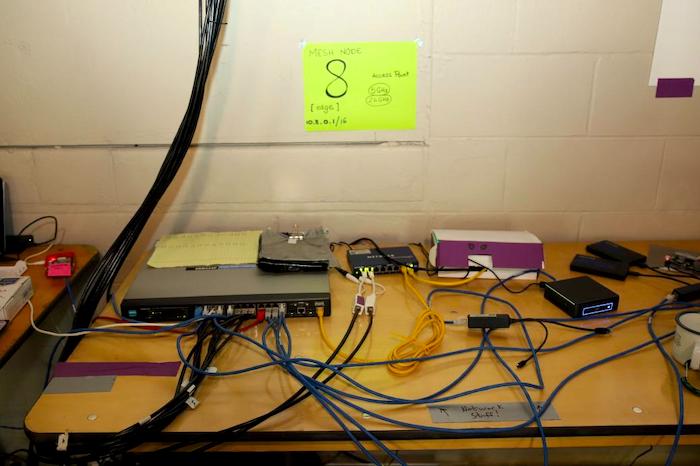 Mesh network wiring configuration at DWeb Camp 2019
The Result
Mesh network wiring configuration at DWeb Camp 2019
The Result
Every single word in this document was thoroughly and repeatedly dissected and examined. What were the implications of certain terminologies? For example, what is presumed when we use the word “empower” versus “enable”? Why did we decide not to use the term “user”, and instead opt for “people” or “individual”? We worked with the contributors to be as deliberate as possible with our language.
It was through this process that we illuminated something crucial about the aims of the Decentralized Web community: That it is about more than the technical infrastructure, it is about social and organizational norms and aspirations. Technical specifications can enable or prevent certain outcomes, of course. But what is fundamental and subversive about this Decentralized Web movement is that it is about elevating both individual and collective human agency. It is about creating more just and equitable relations between people, and creating networks that help us address the urgent challenges, not exacerbate them.
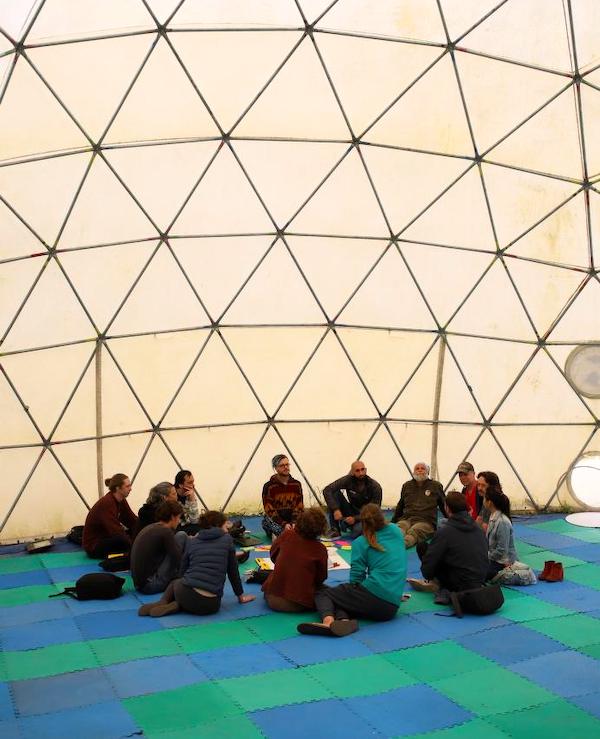 A group discussion inside the Dome of Decentralization at DWeb Camp 2019
A group discussion inside the Dome of Decentralization at DWeb Camp 2019
A large part of this project was reflecting on the inherited dynamics that we take for granted with the internet we have today. By putting into words our shared ideals for a better web of the future, we had to shed certain assumptions about what constitutes success.
Our contributors continued to point to other sets of principles that articulate values raised in this one, but often with more depth and clarity. We decided that it was important to acknowledge those other principles. The DWeb Principles are not designed to supplant these other frameworks, nor does pointing to them mean that all of those in this DWeb community agree with all that is said in them. It is meant to signify that we are not alone in our pursuit for more fun, equitable, and secure networked systems, and stand alongside these other communities’ efforts.
This process resulted in five overarching principles, with sub points that expand upon them. The principles are ordered from specific to general, beginning with more explicit technical features of a DWeb:
1) Technology for Human Agency
2) Distributed Benefits
3) Mutual Respect
4) Humanity
5) Ecological Awareness
 Code of Conduct (in yellow) prominently displayed at the center of the Mushroom Farm, DWeb Camp 2019
What Comes Next
Code of Conduct (in yellow) prominently displayed at the center of the Mushroom Farm, DWeb Camp 2019
What Comes Next
We hope this is an accurate snapshot of the types of concerns that this DWeb community engages with and upholds as we strive to build better networks. We hope people will read it, share it, and even take what they agree with and remix it if they’d like. If someone were to be inspired by these principles, adapt it for their own needs and put forth their own version, we would see that as a success on its own.
Being explicit about what a project stands for is a big first step in establishing trust, not just among its contributors, but also with the people who use their tools and services. A strong value statement allows others to hold organizations accountable, to ensure that they continue striving for their highest aspirations while doing all they can to avoid making harmful tradeoffs.
At least knowing where projects stand for, at least knowing what they care about, is a big first step in our ability to know which projects are worth investing in with our time, energy and attention. These principles define what values the DWeb community stands for, not just what it stands against. We hope this document will help guide those who are already creating the building blocks of the DWeb, and appeal to those who want to join the movement to build better, more resilient decentralized webs of connection and knowledge.
 The Dome of Decentralization at night, DWeb Camp 2019
The Dome of Decentralization at night, DWeb Camp 2019
—
 Mai Ishikawa Sutton at DWeb Camp 2019
Mai Ishikawa Sutton at DWeb Camp 2019
Mai Ishikawa Sutton is a co-founder and editor of COMPOST, an online decentralized magazine about the digital commons, Associate Producer of DWeb Projects and DWeb Camp 2019, and Digital Commons Fellow with the Commons Network. Their previous projects and employers include People’s Open Network, Oakland Public Library, Shareable, and Electronic Frontier Foundation.
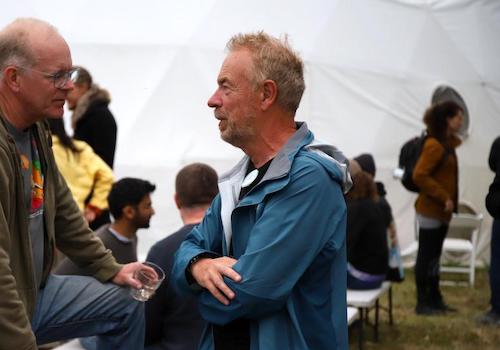 John Conor Ryan, center, at DWeb Camp 2019
John Conor Ryan, center, at DWeb Camp 2019
John Conor Ryan has focused on corporate strategy, while thinking as a mathematician and physicist, looking at ways to succeed where the technology is new and difficult, and the path to success not evident. He previously was part of the People Centered Internet project, with Vint Cerf and MeiLin Fung, and with the One Laptop Per Child project his wife co-led. John has more recently cofounded two startups based on decentralized technologies.
The post Behind the Scenes of the Decentralized Web Principles appeared first on Internet Archive Blogs.
Giving “Last Chance Books” New Life Through Digitization
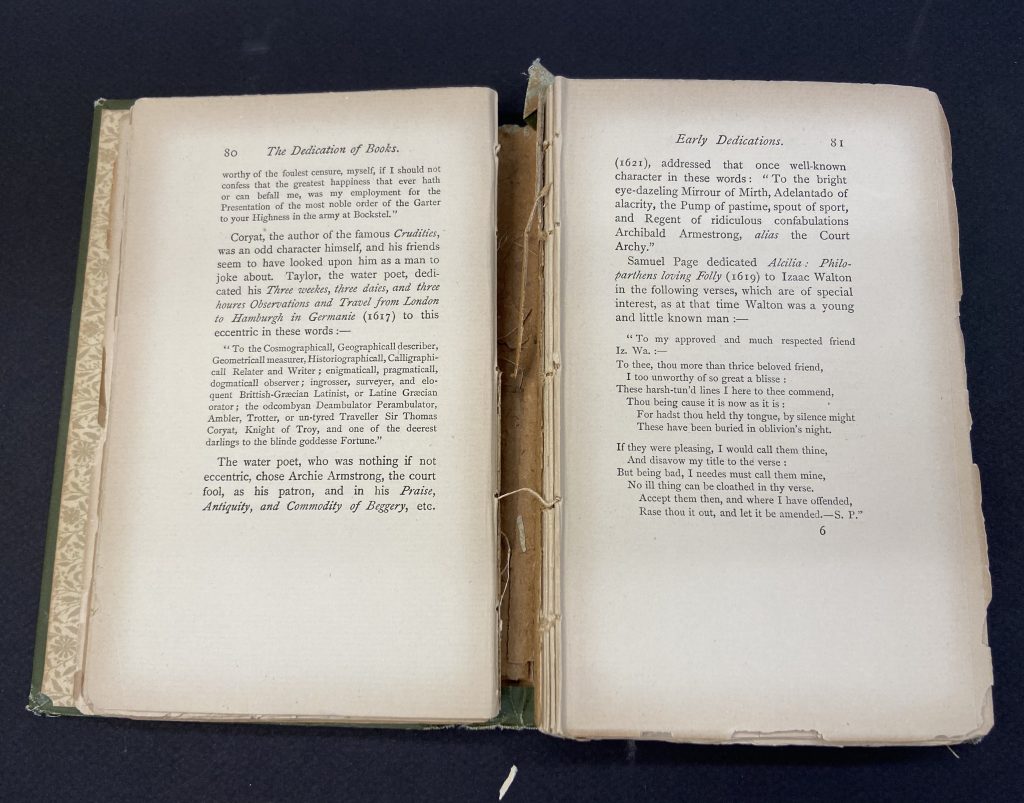 The Dedication of Books by H.B. Wheatley (1887), as presented for scanning. View the digitized book online.
The Dedication of Books by H.B. Wheatley (1887), as presented for scanning. View the digitized book online.
Sometimes they arrive tied up in string because their binding is broken. Others are in envelopes to protect the brittle pages from further damage.
Aging books are sent from libraries to the Internet Archive for preservation. Thanks to the careful work of the nearly 70 people who scan at digitization centers in the United States, United Kingdom and Canada, the books get a second life with a new audience.
Scanners sometimes call these “Last Chance Books” and they take pride in restoring them. As they turn the pages one at time to be photographed and digitized, they develop a daily cadence—but it must be adjusted with fragile materials.
The Dedication of Books by H.B. Wheatley (1887), as presented for scanning and after digitization. View online.“We do our best with the flaking or cracking pages,” said Andrea Mills, digitization program manager for the Internet Archive stationed in Toronto, Canada. “You have to be really cautious that the flake doesn’t fall off and cover a word. It’s almost like a puzzle.”
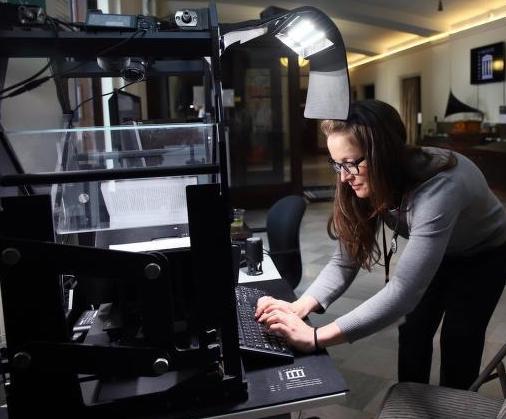 Elizabeth MacLeod, demoing a Scribe in the foyer of the Internet Archive in San Francisco, pre-COVID.
Elizabeth MacLeod, demoing a Scribe in the foyer of the Internet Archive in San Francisco, pre-COVID.
Some books that land at the Internet Archive digitization centers date back to the 1700s. They are fiction and nonfiction, journals and pamphlets covering a range of topics. And, it can be surprising to learn what reviving the material means to patrons.
“We chuckled when we digitized a book on sea captains. We thought – who will care? And then a year later, it had hundreds of views,” said Elizabeth MacLeod, senior manager of satellite digitization services who manages remote operations out of Wilmington, North Carolina.
Digitization helps preserve materials that are no longer in circulation at their holding library because they are falling apart. It also gives new exposure to books that are out of print that may otherwise be forgotten.
Both Mills and MacLeod began working for the Internet Archive more than 10 years ago as book scanners – also known as Scribe operators. Mills has an arts degree in jewelry design and teaching; MacLeod studied biology. They were both drawn to the mission of the Internet Archive and share a passion of connecting people with resources.
Over the years, Mills and MacLeod have worked closely with librarians and archivists around the world to digitize their collections, learning more with each project. They now manage digitization and support sites with training and best practices, many embedded in libraries, in 10 countries and upwards of 30 locations. Digitizing is a somewhat solitary task and some people “get in the zone” while scanning; others are very chatty or listen to music, Mills said.
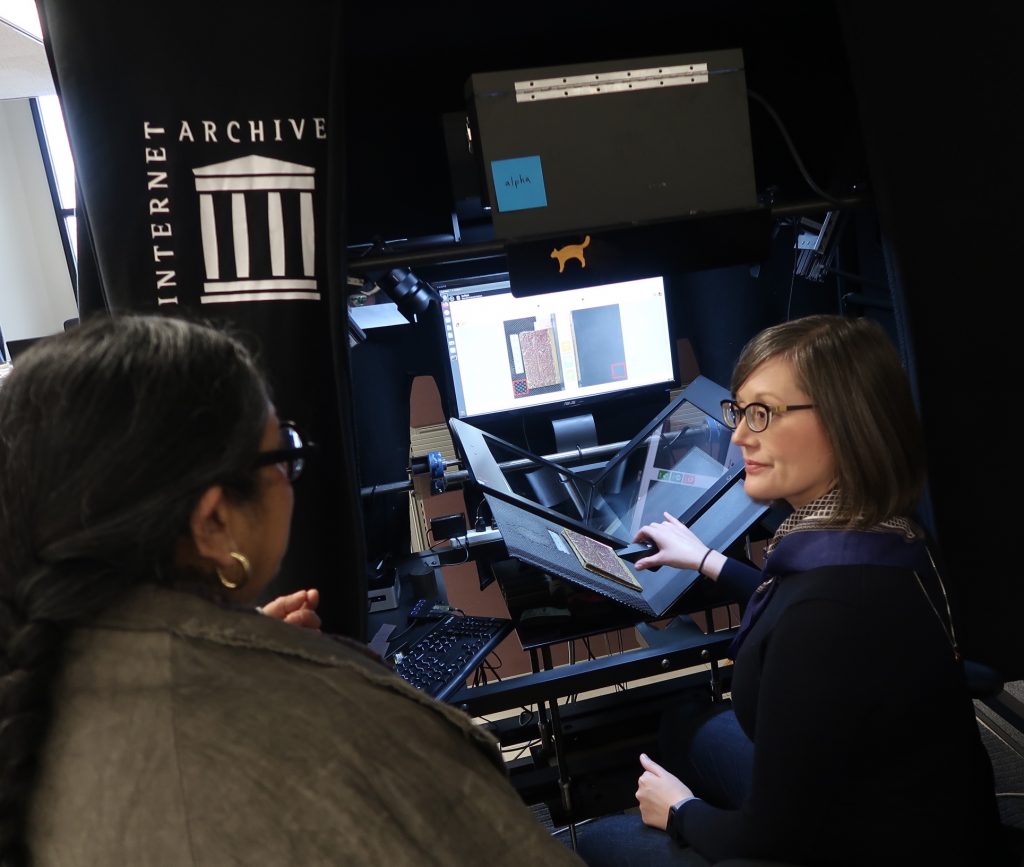 Andrea Mills, showing off the Scribe to a tour celebrating the 2020 ALCTS Outstanding Collaboration Citation for digitizing a collection of Tamil materials at University of Toronto.
Andrea Mills, showing off the Scribe to a tour celebrating the 2020 ALCTS Outstanding Collaboration Citation for digitizing a collection of Tamil materials at University of Toronto.
Many employees have worked together for nearly a decade and there is a friendly, collaborative vibe at the centers. “We have all sorts of people—artists, printers and photographers. They are people who are meticulous and love books,” Mills said. A recent viral video shared on the Internet Archive’s Twitter account features Scribe operator Eliza Zhang, who has worked at the Archive for more than ten years. Book conservators from larger institutional partners also offer additional training for Internet Archive operators on best practices for handling their unique collections.
MacLeod says the scanners are all committed to providing a service to readers and it’s satisfying to help people with disabilities connect with books, “It’s energizing to be part of an organization that is thinking outside the box,” she said. “I want people to be able to have more access to whatever they are trying to find.”
Added Mills: “I’m an information junky. I love the search and the hunt and the finding the answer. The power of the internet and digitization is that you can find that answer faster. It just sort of opens up the possibilities of what can do.”
The post Giving “Last Chance Books” New Life Through Digitization appeared first on Internet Archive Blogs.
Library Holdings from the University of Tokyo Now Available Through the Internet Archive
Written by Professor Tom Gally, University of Tokyo, and Katie Barrett, Internet Archive & JET Program Alum
Translations by Tomoki Sakakibara, University of Tokyo
(日本語はページ下部にあります。 Scroll down for Japanese version.)
As our global society grows ever more connected, it can be easy to assume that all of human history is just one click away. Yet language barriers and physical access still present major obstacles to deeper knowledge and understanding of other cultures, even on the world wide web. That is why the Internet Archive is thrilled to announce a new partnership with the University of Tokyo General Library. Spearheaded by Masaya Nakatake as a member of the UTokyo Academic Archives Project Office, the Internet Archive partnership provides expanded access and a digital backup for some of the library’s most precious artifacts.

Since June 2020, our Collections team has worked in tandem with library staff to ingest thousands of digital files from the General Library’s servers, mapping the metadata for over 4,000 priceless scrolls, texts, and papers. The collection, representing meticulous digitization efforts by Japanese historians and scholars, showcases hundreds of years of rich Japanese history expressed through prose, poetry, and artwork.
Among the highlights of the holdings are manuscripts and annotated books from the personal collection of the novelist Mori Ōgai (1862–1922), an early manuscript of the Tale of Genji, and a unique collection of Chinese legal records from the Ming Dynasty.
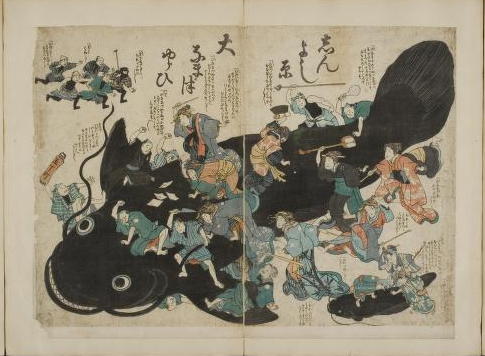
Most of the works are written in Japanese, but some of them include illustrations that can be appreciated by anyone now. A search through the collection for 地震 (jishin, “earthquake”), for example, yields a fascinating set of depictions of earthquakes and their impact in past centuries.
In one satirical illustration, thought to date from shortly after the 1855 Edo earthquake, courtesans and others from the demimonde, who suffered greatly in the disaster, are shown beating the giant catfish that was believed to cause earthquakes. The men in the upper left-hand corner represent the construction trades; they are trying to stop the attack on the fish, as rebuilding from earthquakes was a profitable business for them.
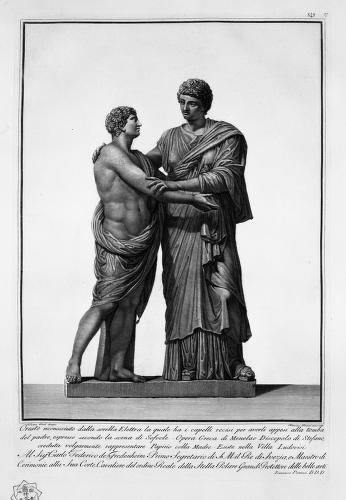
Seismic destruction is expressed more horrifically in ukiyo-e prints of the burning of Edo (Tokyo) after that same 1855 earthquake and of buildings collapsing during the 1891 Mino-Owari earthquake. They are a sobering reminder of the role that natural disasters have played in Japanese life.
Other highlights are high-resolution images from the Kamei Collection of original etchings from Opere di Giovanni Battista Piranesi, Francesco Piranesi e d’altri, originally published by Firmin Didot Freres in Paris between 1835 and 1839.
We hope this partnership and collection will expand access to history and culture from Japan and spur a new generation of usage and scholarship.
About the University of Tokyo General LibraryThe University of Tokyo was established in 1877 as the first national university in Japan. As a leading research university, UTokyo offers courses in essentially all academic disciplines at both undergraduate and graduate levels and conducts research across the full spectrum of academic activity. The University of Tokyo Library System is composed of 30 libraries, with the General Library being the largest among them. While providing services to the researchers and students of UTokyo, the General Library also plays a central role in the operation and management of the Library System. The General Library’s history can be traced back nearly 130 years to the university’s founding and it now houses approximately 1.3 million books, including rare collections inherited from academies in the Edo period.
About the Internet ArchiveThe Internet Archive is one of the largest libraries in the world and home of the Wayback Machine, a repository of 475 billion webpages. Founded in 1996 by Internet Hall of Fame member Brewster Kahle, the Internet Archive now serves more than 1.5 million patrons each day, providing access to 70 petabytes of data—books, web pages, music, television, and software—and working with more than 800 library and university partners to create a digital library, accessible to all. To make a donation to the Internet Archive, please visit https://archive.org/donate/
東京大学総合図書館の所蔵資料がインターネットアーカイブから利用可能に世界のネットワーク化がかつてなく進んだ現在、人間の歴史のどんなことでもワンクリックで調べられるようになったと思いがちです。しかし、外国文化についての知識や理解を深めるうえで、たとえインターネット上であっても言語の障壁や物理的制約が大きな妨げとなる現状は変わりません。それだからこそ、インターネットアーカイブでは、東京大学総合図書館との新たな提携を発表できることをたいへん嬉しく思います。インターネットアーカイブと東大総合図書館が共同で進める本事業は、東京大学学術資産アーカイブ化推進室の中竹聖也氏を中心として進められ、東大総合図書館が所蔵する極めて貴重な資料群のデジタル・バックアップを提供し、アクセスを拡大するものです。
インターネットアーカイブのコレクションチームでは2020年6月より、同館スタッフと協力して東大総合図書館のサーバーから数千単位のデジタルファイルを取り込み、4000点以上の極めて貴重な巻物、写本、資料などのメタデータ整備を進めてまいりました。このコレクションは日本の歴史家や研究者による緻密なデジタル化作業から生まれたものであり、何世紀にも及ぶ日本の豊かな歴史が散文、韻文、図像によって表現されています。
特筆すべき資料としては、森鴎外 (1862-1922) の個人文庫に収められていた鴎外自筆の写本や鴎外本人による書き込みがある書物を集めた鴎外文庫、源氏物語の初期の写本、さらに、中国明代中期の条例(皇帝の判断に基づく法令や先例)をまとめた皇明條法事類纂(同館以外での所蔵は確認されていません)などがあります。
日本語で書かれた作品ではありますが、どなたでも理解できる図像入りの作品も少なくありません。たとえば、「地震」を検索語としてこのコレクションを検索すれば、過去数世紀に起きた地震とその影響が描かれた興味深い資料群を閲覧できます。
1855年(安政2年)の安政江戸地震直後の作と思われるある風刺画には、地震で大被害を被った吉原の遊女や町の人々が、地震の元凶と信じられていた大鯰(おおなまず)を懲らしめている様子が描かれています。左上の男たちが止めに入ろうとしていますが、それは震災後の復興で商売が潤った建築職の人たちだからです。
地震による被害がもっと恐ろしく表現されているのが、同じく安政江戸地震後に発生した江戸の火災や、1891年(明治24年)の濃尾地震による家屋倒壊が描かれた浮世絵です。いずれも自然災害が日本人の暮らしにおいて果たしてきた役割を改めて思い起こさせてくれる作品です。
そのほかの特筆すべき資料としては、亀井文庫『ピラネージ版画集 Opere di Giovanni Battista Piranesi, Francesco Piranesi e d’altri』 (1835-1839、パリ、フィルマン・ ディド兄弟出版社刊) の高精細画像が挙げられます。
インターネットアーカイブでは、東大総合図書館との提携と本コレクションの公開によって、日本の歴史と文化が世界からいっそうアクセスしやすいものとなり、新たな世代の資料活用と学術研究が促進されることを願っています。
東京大学総合図書館について東京大学は1877年(明治10年)に創設された日本最初の国立大学です。世界トップクラスの総合研究大学として、広範な専門分野における学部・大学院レベルの教育活動と、あらゆる学術領域にわたる研究活動をおこなっています。東京大学総合図書館は30の部局図書館・室で構成される東京大学附属図書館の中で最大の図書館であり、東大の研究者・学生向けのサービスをおこなうとともに、東大附属図書館の事務・業務を支える上で中心的な役割を果たしています。130年近くに及ぶその歴史は東大創設当初にまでさかのぼります。所蔵図書数は約130万冊にのぼり、江戸時代の学問所から継承された貴重な資料群も所蔵しています。
インターネットアーカイブについてインターネットアーカイブ (Internet Archive) は世界有数のライブラリ(図書館)であり、4750億ページもの保存済みウェブサイトをアーカイブ検索できる「ウェイバックマシン (Wayback Machine) 」を運営する非営利法人です。インターネットの発展への功労者を表彰する「インターネットの殿堂 (Internet Hall of Fame)」に名を連ねるブリュースター・ケール (Brewster Kahle) によって1996年に設立されました。現在、一日150万人以上のアクティブユーザーに、書籍やウェブページ、音楽、TV、ソフトウェアなど70ペタバイト(約7万テラバイト)規模のデータへのアクセスを提供するとともに、世界800以上の図書館や大学と連携して、万人に開かれたデジタル図書館の構築を進めています。インターネットアーカイブへの寄付は https://archive.org/donate/ で受け付けています。
(訳:榊原知樹)
The post Library Holdings from the University of Tokyo Now Available Through the Internet Archive appeared first on Internet Archive Blogs.
Mythbusting Controlled Digital Lending: Community Rallies to Fight Misinformation About the Library Practice

Academics, legal experts, and authors explained the thoughtful reasoning and compelling need for libraries to engage in Controlled Digital Lending (CDL) at a webinar hosted by the Internet Archive and Library Futures on February 11. A recording of the session is now available.
The panel dispelled myths about CDL, the digital lending model in which a library lends a digital version of a print book it owns. Emphasizing the limited and controlled aspect of the practice, the speakers said CDL allows libraries to fulfill their mission of serving the public in the digital age. The global pandemic only underscores the importance of providing flexibility in how people can access information.
Isn’t CDL digital piracy? No, CDL is not like Napster, said Kyle K. Courtney, copyright advisor at Harvard University, referring to the music file-sharing service. Twenty years ago, the actions of Napster were ruled illegal because it made unlimited reproductions of MP3 music to anyone, anywhere.
“CDL uses technology to replicate a library’s right to loan works in a digital format—one user at a time,” Courntey said. Libraries are using rights they already have, leveraging the same technology as publishers to make sure that the books are controlled when they’re loaned—not duplicated, copied or redistributed.
“Libraries are not pirates. There is a vast difference between the Napster mission and the library mission,” Courtney said. “We can loan books to patrons. Only now we’re harnessing that right in the digital space.”
In laying out the rationale behind CDL, Courtney described the “superpower” granted to libraries by Congress through copyright law to serve the public. The “fair use” section of the law allows libraries to responsibly lend materials, and experts say logically includes both print and digital works.
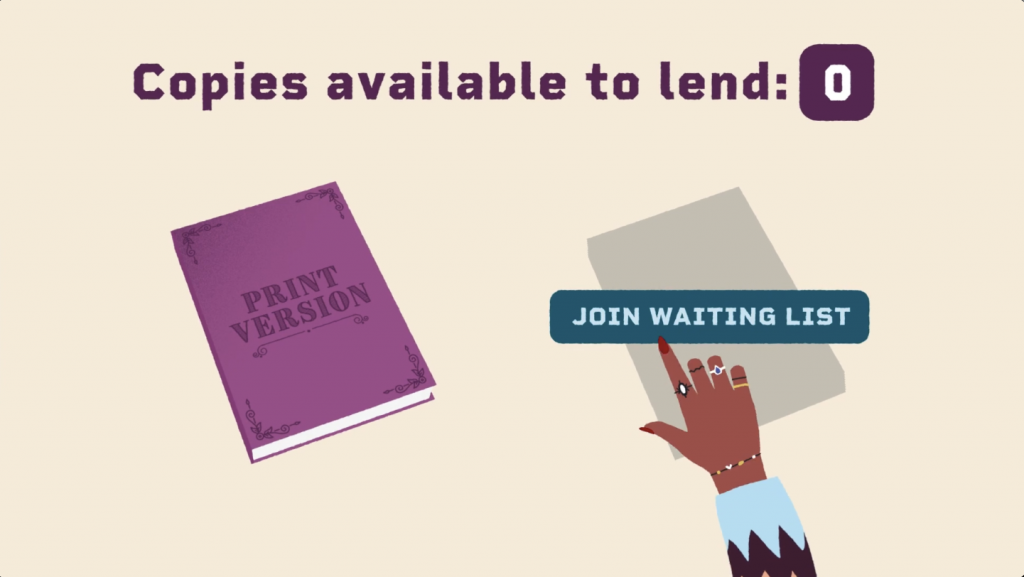 The webinar featured the premiere of “Controlled Digital Lending Explained,” a short video that describes how CDL works.
The webinar featured the premiere of “Controlled Digital Lending Explained,” a short video that describes how CDL works.
The idea of “fair use” has been around as long as there has been copyright, and it applies to new technologies, said Michelle Wu, attorney and law librarian at the webinar. The Internet Archive did not invent CDL. Wu is the visionary behind CDL, developing the concept in 2002 as a way to protect a library’s print collection from natural disaster—an imperative she faced in rebuilding a library destroyed by flooding.
Just as libraries lend out entire books, fair use allows the scanning of whole books, said panelist Sandra Aya Enimil, copyright librarian and contract specialist at Yale University. The law makes no mention of the amount of material that can be made available under “fair use,” so for libraries to fulfill their purpose they can make complete books—whether in print or digital—available to patrons, she said.
It’s a myth that librarians need author and publisher permission for CDL, explained Jill Hurst-Wahl, copyright scholar and professor emerita in Syracuse University’s School of Information Studies. “Authors and publisher control ends at the time a book is published, then fair use begins,” she said. “Once a work is legally acquired by you, by a library, the copyright owners’ rights are exhausted.”
Library lending is viewed as fair use, in part, because it is focused on socially beneficial, non-commercial outcomes, like literacy, said Hurst-Wahl. Also, libraries loan physical books without concern about the market effect—so the same rules apply if a digital version of the book is substituted.

CDL does not harm authors or publisher sales, the panelists emphasized. Indeed, it can provide welcome exposure.
“The reality is that CDL can help authors by enhancing discoverability, availability and accessibility of their works,” said Brianna Schofield, executive director of Authors Alliance, speaking at the event. “It helps authors to spread their ideas, and it helps authors to build their audiences.”
Many of the books that are circulated by CDL are rare, out-of-print books that would otherwise be unavailable. This source material can be useful for writers as they develop their creative works.
“Digital and physical libraries contribute to a healthy publishing ecosystem and increase sales and engagement for creative works,” said Jennie Rose Halpin, executive director of Library Futures, a newly formed nonprofit coalition advocating for libraries to operate in the digital space. Research shows that leveraged digitization increases sales of physical additions by about 34% and increases the likelihood of any sale by 92%, particularly for less popular and out-of-print works.
Because digitized versions can be made more readily available, CDL can extend access to library collections to people with print disabilities or mobility issues, the panelists noted. CDL also allows libraries to preserve material in safe, digital formats with the best interest of the public—not profits—at the center of its work.
“People love books and will buy if they’re able. But we have to remember that paper books and even some ebooks do not serve the needs of all readers,” said Andrea Mills, digitization program manager at the Internet Archive and lead on the Archive’s accessibility efforts. “Accessibility is a human right that must be vigilantly protected.”
For anyone interested in learning more about how to get involved with CDL, the Internet Archive now has 2 million books available to borrow for free, and an active program for libraries that want to make their collections available through CDL.
“The CDL community of practice is thriving,” said Chris Freeland, director of Open Libraries at the Internet Archive. “We are in a pandemic. Libraries are closed. Schools are closed. CDL just makes sense and solves problems of access.”
To learn more about CDL, and to show your support for the library practice, join the #EmpoweringLibraries movement.
The post Mythbusting Controlled Digital Lending: Community Rallies to Fight Misinformation About the Library Practice appeared first on Internet Archive Blogs.
Meet Eliza Zhang, Book Scanner and Viral Video Star
The glass rises and falls. Quickly and efficiently, a woman turns the pages to the rhythmic beep of the cameras. She never misses a beat.

In its first 48 hours, this tweet about book scanning at the Internet Archive went viral, reaching 7.7 million people. More than 1.5 million people viewed the video, liking it 70,000 times and retweeting it 24,000 more. At the center of it all sits Eliza Zhang, a book scanner at the Internet Archive’s headquarters in San Francisco since 2010. When I asked Eliza what she likes about her job, she replied, “Everything! I find everything interesting. I don’t feel it is boring. Every collection is important to me.”
Eliza, a college graduate from southern China, immigrated to the United States in 2009, seeking a new life and new opportunities. She landed in San Francisco during the midst of an economy-crushing recession. But through a city program called JobsNOW, the Internet Archive hired Eliza and scores of other job seekers, training them to digitize, quality control, and upload metadata for books, newspapers, periodicals and manuals. Often our digitizing staff are making these analog texts available online for the first time.
Raising the glass with a foot pedal, adjusting the two cameras, and shooting the page images are just the beginning of Eliza’s work. Some books, like the Bureau of Land Management publication featured in the video, have myriad fold-outs. Eliza must insert a slip of paper to remind her to go back and shoot each fold-out page, while at the same time inputting the page numbers into the item record. The job requires keen concentration.
If this experienced digitizer accidentally skips a page, or if an image is blurry, the publishing software created by our engineers will send her a message to return to the Scribe and scan it again.
Listening to 70s and 80s R & B while she works, Eliza spends a little time each reading the dozens of books she handles. The most challenging part of her job? “Working with very old, fragile books. The paper is very thin. I always wear rubber fingertips and sometimes gloves when I scan newspapers, because of the ink,” she explained.
Tweets Spark a New Interest in DigitizationEliza is one of about 70 Scribe operators at the Internet Archive, working in digitization centers embedded in libraries across the United States, United Kingdom, and Canada. The operations are led by Elizabeth MacLeod, who manages our remote operations, and Andrea Mills, who is stationed at the University of Toronto, with support from managers and operators in each center.
“We try to meet libraries where they are,” said MacLeod, who manages remote operations from her home office in North Carolina. “From digitizing a few shipments a year at one of our regional centers to setting up and staffing full-service digitization within the library itself, we have a flexible approach to our library partnerships.”
Across Twitter, another common question arose: “Why hasn’t this job been automated?” To many, the repetitive act of turning the pages in a book and photographing them seems like the natural task for a robot. In fact, some 20 years ago, we tested commercial book scanners that feature a vacuum-powered page-turning arm. It turns out those automated scanners didn’t really work well for brittle books, rare volumes, and other special collections—the kinds of material our library partners ask us to digitize.
“Clean, dry human hands are the best way to turn pages,” said Mills, from her socially-distanced office at the University of Toronto. In her 15 years on the job, she has worked with hundreds of librarians to hone our digitization operations, balancing our need to preserve the original pages with minimal impact during the imaging process. “Our goal is to handle the book once and to care for the original as we work with it,” Mills explained.
So what does it take to be a Scribe operator? “It takes a level of zen,” wrote Brewster Kahle, founder and digital librarian of the Internet Archive, responding to one of the many threads about the video that popped up on Reddit. “It takes concentration and a love of books. For those who love working with books and libraries, it fits well.”
As for the hardware used for digitization, like much at the Internet Archive, the equipment is engineered and purpose-built for the job. In the viral video, Eliza is operating the original Scribe machine, designed more than 15 years ago, and Scribe software that was developed in-house and refined continuously over years of operation. “The variation in books makes [automation] difficult to do quickly and without damage,” Kahle elaborates. “We do not disbind the books, which also makes automation more difficult.”
18,000 Books and ClimbingIn the decade Eliza has been working with the Internet Archive, she has scanned more than 3 million pages, 14,000 foldouts, and 18,000 items (mostly books).
And what about all the sudden social media attention? Eliza shrugs. She’s never been on Twitter before. “My goal is to guarantee zero errors,” she said. “I want to give our readers a satisfying experience.”
The Covid-19 pandemic has both created higher demand for digital content as well as shuttered some of our scanning centers for health safety. We have reopened following local and national health guidelines and continue to engage with new libraries on their digitization projects.
If your library is interested in learning more about the Internet Archive’s digitization services, visit https://archive.org/scanning, and contact us at digitallibraries@archive.org.
The post Meet Eliza Zhang, Book Scanner and Viral Video Star appeared first on Internet Archive Blogs.
Thank you Ubuntu and Linux Communities
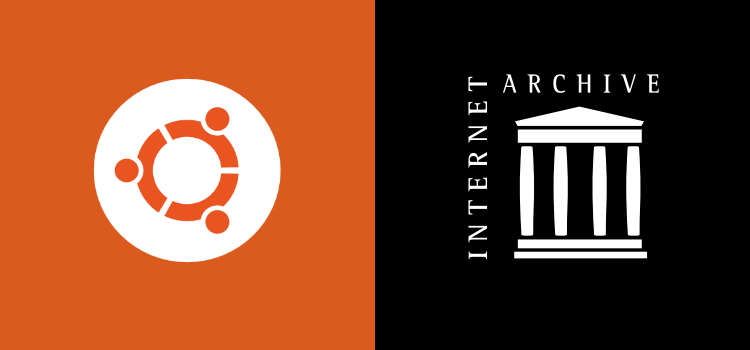
The Internet Archive is wholly dependent on Ubuntu and the Linux communities that create a reliable, free (as in beer), free (as in speech), rapidly evolving operating system. It is hard to overestimate how important that is to creating services such as the Internet Archive.
When we started the Internet Archive in 1996, Sun and Oracle donated technology and we bought tape robots. By 1999, we shifted to inexpensive PC’s in a cluster, running varying Linux distributions.
At this point, almost everything that runs on the servers of the Internet Archive is free and open-source software. (I believe our JP2 compression library may be the only piece of proprietary software we use.)
For a decade now, we have been upgrading our operating system on the cluster to the long-term support server Linux distribution of Ubuntu. Thank you, thank you. And we have never paid anything for it, but we submit code patches as the need arises.
Does anyone know the number of contributors to all the Linux projects that make up the Ubuntu distribution? How many tens or hundreds of thousands? Staggering.
Ubuntu has ensured that every six months a better release comes out, and every two years a long-term release comes out. Like clockwork. Kudos. I am sure it is not easy, but it is inspiring, valuable and important to the world.
We started with Linux in 1997, we started with Ubuntu server release Warty Warthog in 2004 and are in the process of moving to Focal (Ubuntu 20.4).
Depending on free and open software is the smartest technology move the Internet Archive ever made.
1998: https://www.sfgate.com/business/article/Archiving-the-Internet-Brewster-Kahle-makes-3006888.php
Internet Archive servers running at the Biblioteca Alexandrina circa approximately 2002.
2002: https://archive.org/about/bibalex.php
2013: https://www.theguardian.com/technology/2013/apr/26/brewster-kahle-internet-archive
2021: Internet Archive
The post Thank you Ubuntu and Linux Communities appeared first on Internet Archive Blogs.
Internet Archive’s Modern Book Collection Now Tops 2 Million Volumes

The Internet Archive has reached a new milestone: 2 million. That’s how many modern books are now in its lending collection—available free to the public to borrow at any time, even from home.
“We are going strong,” said Chris Freeland, a librarian at the Internet Archive and director of the Open Libraries program. “We are making books available that people need access to online, and our patrons are really invested. We are doing a library’s work in the digital era.”
The lending collection is an encyclopedic mix of purchased books, ebooks, and donations from individuals, organizations, and institutions. It has been curated by Freeland and other librarians at the Internet Archive according to a prioritized wish list that has guided collection development. The collection has been purpose-built to reach a wide base of both public and academic library patrons, and to contain books that people want to read and access online—titles that are widely held by libraries, cited in Wikipedia and frequently assigned on syllabi and course reading lists.
“The Internet Archive is trying to achieve a collection reflective of great research and public libraries like the Boston Public Library,” said Brewster Kahle, digital librarian and founder of the Internet Archive, who began building the diverse library more than 20 years ago.
“Libraries from around the world have been contributing books so that we can make sure the digital generation has access to the best knowledge ever written,” Kahle said. “These wide ranging collections include books curated by educators, librarians and individuals, that they see are critical to educating an informed populace at a time of massive disinformation and misinformation.”
The 2 million modern books are part of the Archive’s larger collection of 28 million texts that include older books in the public domain, magazines, and documents. Beyond texts, millions of movies, television news programs, images, live music concerts, and other sound recordings are also available, as well as more than 500 billion web pages that have been archived by the Wayback Machine. Nearly 1.5 million unique patrons use the Internet Archive each day, and about 17,000 items are uploaded daily.
Presenting the (representative) 2 millionth bookEvery day about 3,500 books are digitized in one of 18 digitization centers operated by the Archive worldwide. While there’s no exact way of identifying a singular 2 millionth book, the Internet Archive has chosen a representative title that helped push past the benchmark to highlight why its collection is so useful to readers and researchers online.
On December 31, The dictionary of costume by R. Turner Wilcox was scanned and added to the Archive, putting the collection over the 2 million mark. The book was first published in 1969 and reprinted throughout the 1990s, but is now no longer in print or widely held by libraries. This particular book was donated to Better World Books via a book bank just outside of London in August 2020, then made its way to the Internet Archive for preservation and digitization.
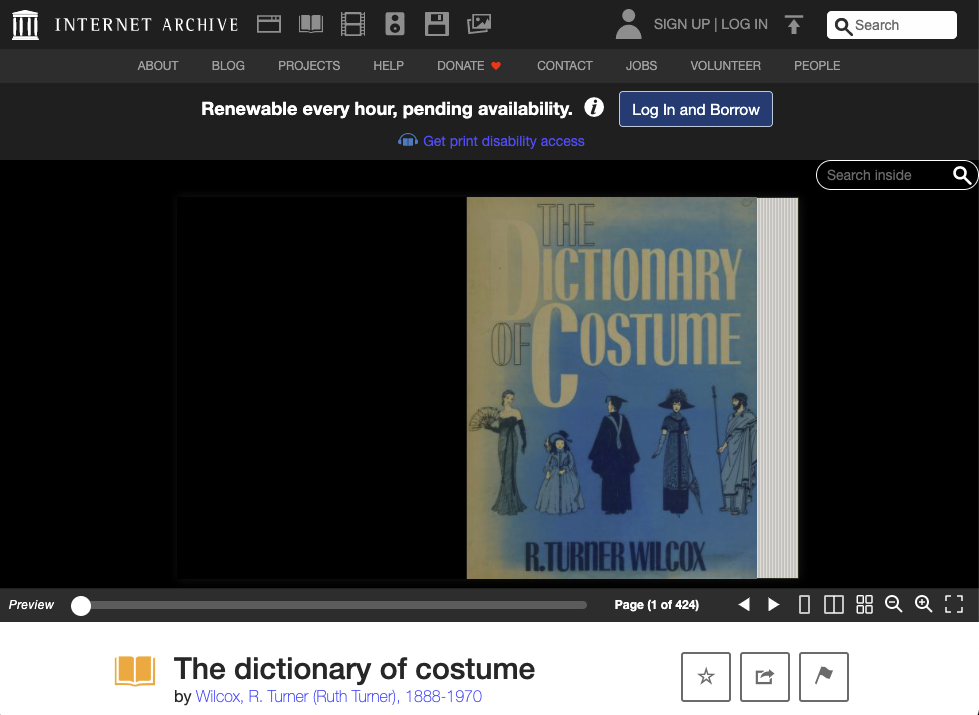 “The dictionary of costume” by R. Turner Wilcox, now available for borrowing at archive.org.
“The dictionary of costume” by R. Turner Wilcox, now available for borrowing at archive.org.
As expected from the title, the book is a dictionary of terms associated with costumes, textiles and fashion, and was compiled by an expert, Wilcox, the fashion editor of Women’s Wear Daily from 1910 to 1915. Given its authoritative content, the book made it onto the Archive’s wish list because it is frequently cited in Wikipedia, including on pages like Petticoat and Gown.
Now that the book has been digitized, Wikipedia editors can update citations to the book and include a direct link to the cited page. For example, users reading the Petticoat page can see that page 267 of the book has been used to substantiate the claim that both men & women wore a longer underskirt called a “petticote” in the fourteenth century. Clicking on that reference will take users directly to page 267 in The dictionary of costume where they can read the dictionary entry for petticoat and verify that information for themselves.
 Screenshots showing how Wikipedia users can verify references that cite “The dictionary of costume” with a single click.
Screenshots showing how Wikipedia users can verify references that cite “The dictionary of costume” with a single click.
An additional reason why this work is important is that there is no commercial ebook available for The dictionary of costume. This book is one of the millions of titles that reached the end of its publishing lifecycle in the 20th century, so there is no electronic version available for purchase. That means that the only way of accessing this book online and verifying these citations in Wikipedia—doing the kind of research that students of all ages perform in our connected world—is through a scanned copy, such as the one now available at the Internet Archive.
Donations play an important roleIncreasingly, the Archive is preserving many books that would otherwise be lost to history or the trash bin.
In recent years, the Internet Archive has received donations of entire library collections. Marygrove College gave more than 70,000 books and nearly 3,000 journal volumes for digitization and preservation in 2019 after the small liberal arts college in Detroit closed. The well-curated collection, known for its social justice, education and humanities holdings, is now available online at https://archive.org/details/marygrovecollege.
Several seminaries have donated substantial or complete collections to the Archive to preserve items or to give them a new life as their libraries were being moved or downsized. Digital access is now available for items from the Claremont School of Theology, Hope International University, Evangelical Seminary, Princeton Theological Seminary, and Anabaptist Mennonite Biblical Seminary.
Just like The dictionary of costume, many of the books supplied for digitization come to the Archive from Better World Books. In its partnership over the past 10 years, the online book seller has donated millions of books to be digitized and preserved by the Archive. Better World Books acquires books from thousands of libraries, book suppliers, and through a network of book donation drop boxes (known as “book banks” in the UK), and if a title is not suitable for resale and it’s on the Archive’s wish list, the book is set aside for donation.

“We view our role as helping maximize the life cycle and value of each and every single book that a library client, book supplier or donor entrusts to us,” said Dustin Holland, president and chief executive officer of Better World Books. “We make every effort to make books available to readers and keep books in the reading cycle and out of the recycle stream. Our partnership with the Internet Archive makes all this possible.”
The Archive provides another channel for customers to find materials, Holland added.
“We view archive.org as a way of discovering and accessing books,” said Holland. “Once a book is discoverable, the more interest you are going to create in that book and the greater the chance it will end up in a reader’s hands as a new or gently used book.”
ImpactHaving books freely available for borrowing online serves people with a variety of needs including those with limited access to libraries because of disabilities, transportation issues, people in rural areas, and those who live in under-resourced parts of the world.
Sean, an author in Oregon said he goes through older magazines for design ideas, especially from cultures that he wouldn’t be exposed to otherwise: “It gives me a wider understanding of my small place in the global historical context.” One parent from San Francisco said she uses the lending library to learn skills like hand drawing to draw characters and landscapes to interact deeper with her child.

The need for information is more urgent than ever.
“We are all homeschoolers now. This pandemic has driven home how important it is to have online access to quality information,” Kahle said. “It’s gratifying to hear from teachers and parents that are now given the tools to work with their children during this difficult time.”
Kahle’s vision is to have every reference in Wikipedia be linked to a book and for every student writing a high school report to have access to the best published research on their subject. He wants the next generation to become authors of the books that should be in the library and the most informed electorate possible.
Adds Kahle: “Thank you to all who have made this possible – all the funders, all the donors, the thousands who have sent books to be digitized. If we all work together, we can do another million this year.”
Take actionIf you’re interested in making a physical donation to the Internet Archive, there are instructions and an online form that start the process in the Internet Archive’s Help Center: How do I make a physical donation to the Internet Archive?
The post Internet Archive’s Modern Book Collection Now Tops 2 Million Volumes appeared first on Internet Archive Blogs.
Suggested Reading List for At Home Learners
Many students do not have direct or unrestricted access to their local libraries during our current health crisis. One of our goals as librarians and stewards is to bring books to these learners of all ages as they continue their educations at home.
As a step toward this, we have created a collection of California State Suggested Reading
that is based on resources from the California Department of Education. This is intended to help students, teachers and their families find books for further learning. (As with any collection, we recommend that adults review items for age-appropriateness before passing them on to children.)
You can find another trove of books curated for students in the Univeral School Library.
And we’ve also created some resource lists for different areas of interests in the Kid Friendly section of our help center. These are fun to explore by yourself, in company or over the internet with friends, and cover topics like :
- Activities
- Animals
- Mathematics
- Mythology
- Outer Space
- Physical Education
- Racial Equality Books for Kids
- Software and Video Games for kids
- World Language
We hope this is a helpful springboard for your journey into any topic.
Stay safe and healthy, and thanks for using the archive!
The post Suggested Reading List for At Home Learners appeared first on Internet Archive Blogs.
Community gathers for an online celebration of Michelson Cinema Research Library
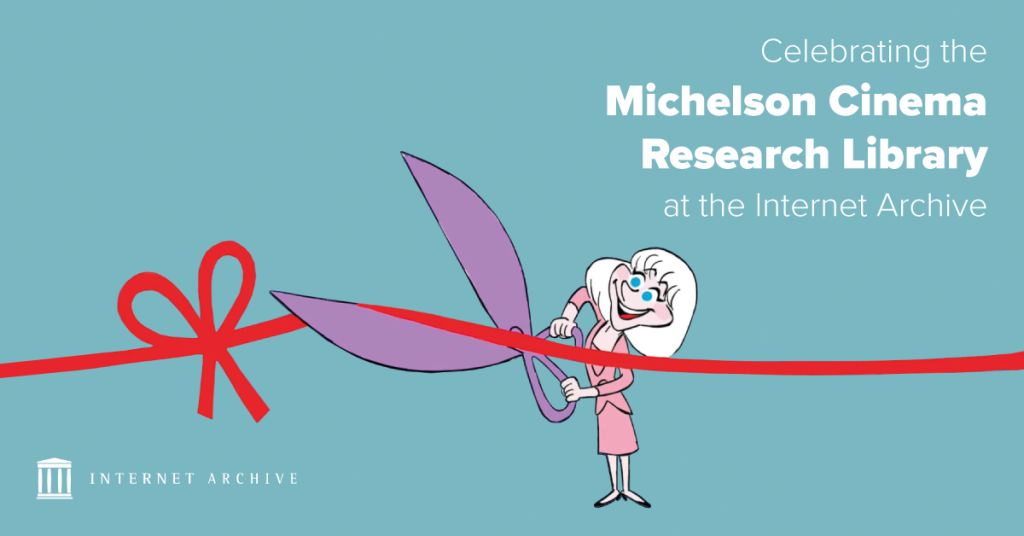
Lillian Michelson was celebrated as a “force of nature” librarian devoted to helping Hollywood filmmakers get the details right at an event on January 27 to unveil a new online home at the Internet Archive for her extensive collection of books, photos, scrapbooks and clippings.
The Michelson Cinema Research Library was opened with an animated version of the research icon cutting a virtual ribbon to an audience of more than 300 people watching online. The public got a first glimpse of 1,300 books that are now digitally available—part of a million items in the rich collection that Michelson donated to the Internet Archive in December.
“Now, for the first time, anyone, anywhere on the planet can go roam into the halls of Lillian’s research library,” said Thomas Walsh, a production designer and former president of the Art Directors Guild, speaking on a panel at the event. “It’s a really unique, eclectic collection. The books go back to the 1700s. Nothing she had is in print anymore. It’s an extraordinary range of material.”
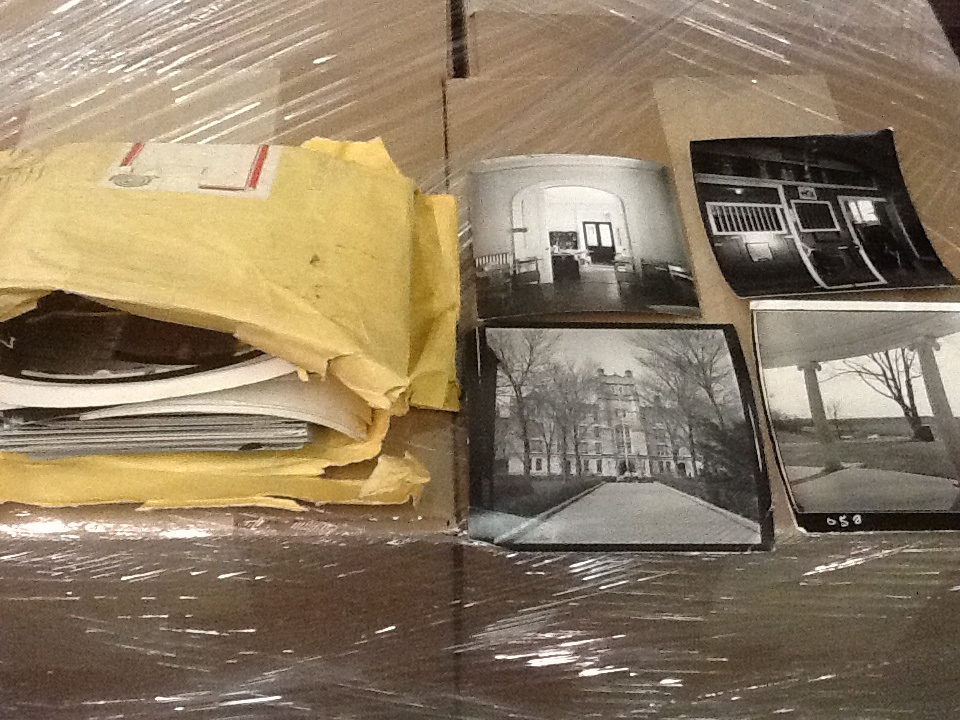
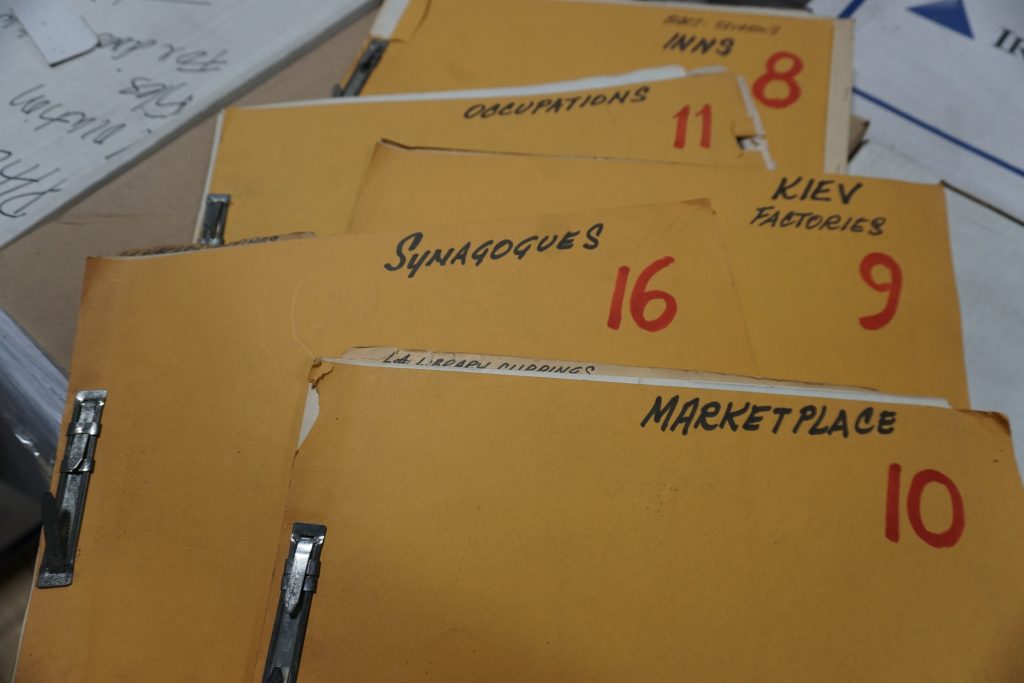 The Michelson Cinema Research Library included some 1600 boxes of photographs, clipping files and books, used by production designers and art directors to create the visual look for a movie.
The Michelson Cinema Research Library included some 1600 boxes of photographs, clipping files and books, used by production designers and art directors to create the visual look for a movie.
Walsh looked for nearly eight years to find a place to house the content, which art directors and others relied on for creating accurate visual backstories to movies. Whether it was finding blueprints of a nuclear submarine or photos of the interior of a 1950s police station, Michelson was respected for being tenacious in pursuit of answers to inform movie productions. In Michelson’s decades of research, she worked on movies such as Rosemary’s Baby, Scarface, Fiddler on the Roof, Full Metal Jacket, The Graduate, and The Birds.
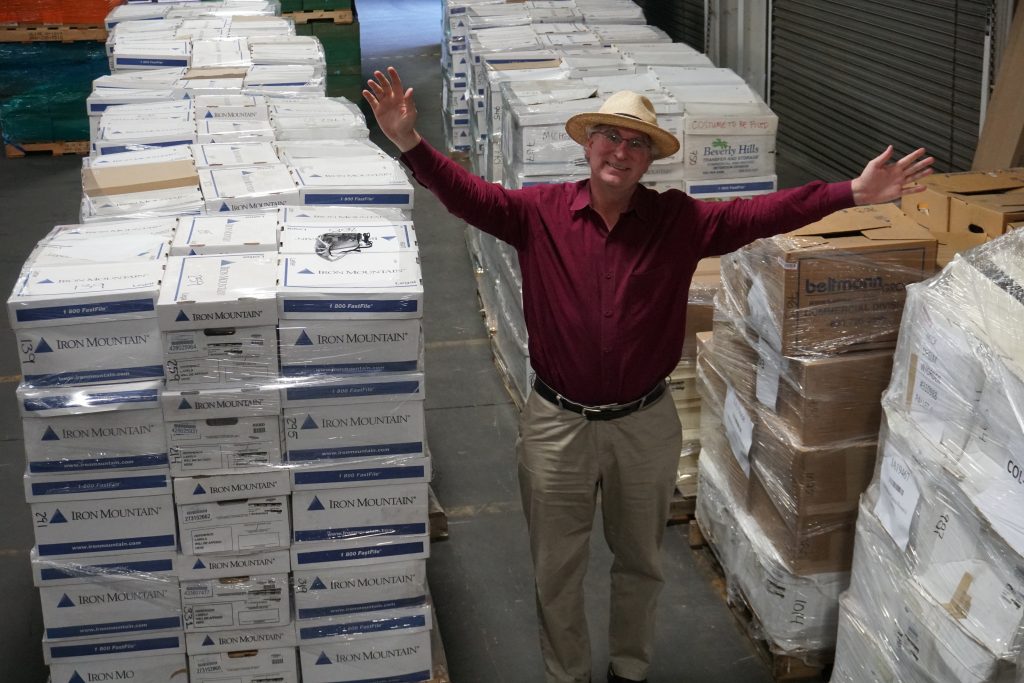 At the Internet Archive Physical Repository, Brewster Kahle greets the arrival of materials from the Michelson Cinema Research Library in December 2020.
At the Internet Archive Physical Repository, Brewster Kahle greets the arrival of materials from the Michelson Cinema Research Library in December 2020.
Brewster Kahle, Digital Librarian and founder of the Internet Archive, said he was amazed when he opened up the first boxes from the Michelson Library and saw the variety and extent of raw materials. Making an internet equivalent of the library will be a huge challenge, but one that also is a great opportunity.
“It’s not just a hodge-podge of used books. It is a complete collection that served a community. It comes with a focus,” Kahle said of the Michelson Cinema Research Library that filled some 1600 boxes on 45 pallets. “The Internet Archive is starting to receive whole libraries. The idea of bringing those online is not just bringing those books and materials online. It’s bringing a community online.”
Daniel Raim, Academy Award-nominated director and panelist at the event, described Michelson as a storyteller whose work was central to helping create a movie’s narrative.
“I always found it fascinating to spend time in Lillian’s library— — and now online at the Internet Archive—it sparks your imagination,” said Raim, who produced and directed a 2015 documentary Harold and Lillian: A Hollywood Love Story, about Michelson, now 92, and her husband, Harold, a storyboard artist and production designer, who died in 2007. The film pays tribute to the beloved couple and their contribution behind the scenes to some of the greatest movies in the past 50 years.
After the panel discussion, the Internet Archives hosted a viewing party of the documentary.
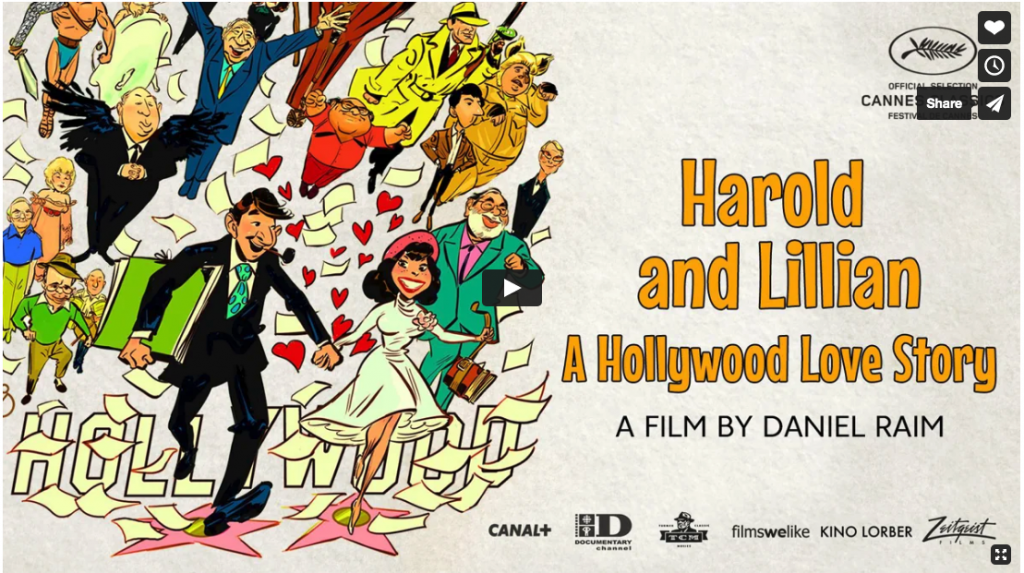
The post Community gathers for an online celebration of Michelson Cinema Research Library appeared first on Internet Archive Blogs.
Bay State College ‘Flips to Digital’ by Donating Entire College Library to the Internet Archive

Bay State College’s Boston Campus has donated its entire undergraduate library to the Internet Archive so that the digital library can preserve and scan the books, while allowing Bay State to gain much needed open space for student collaboration. By donating and scanning its 11,000-volume collection centered on fashion, criminal justice, allied health, and business books, Bay State’s Boston campus decided to “flip entirely to digital.”
When it came to what to do with the books, Jessica Neave, librarian at Bay State College, had to get creative. “I didn’t have a library close by willing to take our collection,” Neave explained. Shortly after reaching out to our partners at Better World Books, she stumbled upon the Inside Higher Education article about the Marygrove College Library donation. This led Neave to our physical item donation form, where she laid out her library’s tight timeline to deaccession its entire print collection. “You guys made it so easy,” Bay State’s librarian said. “It couldn’t have been any easier!”
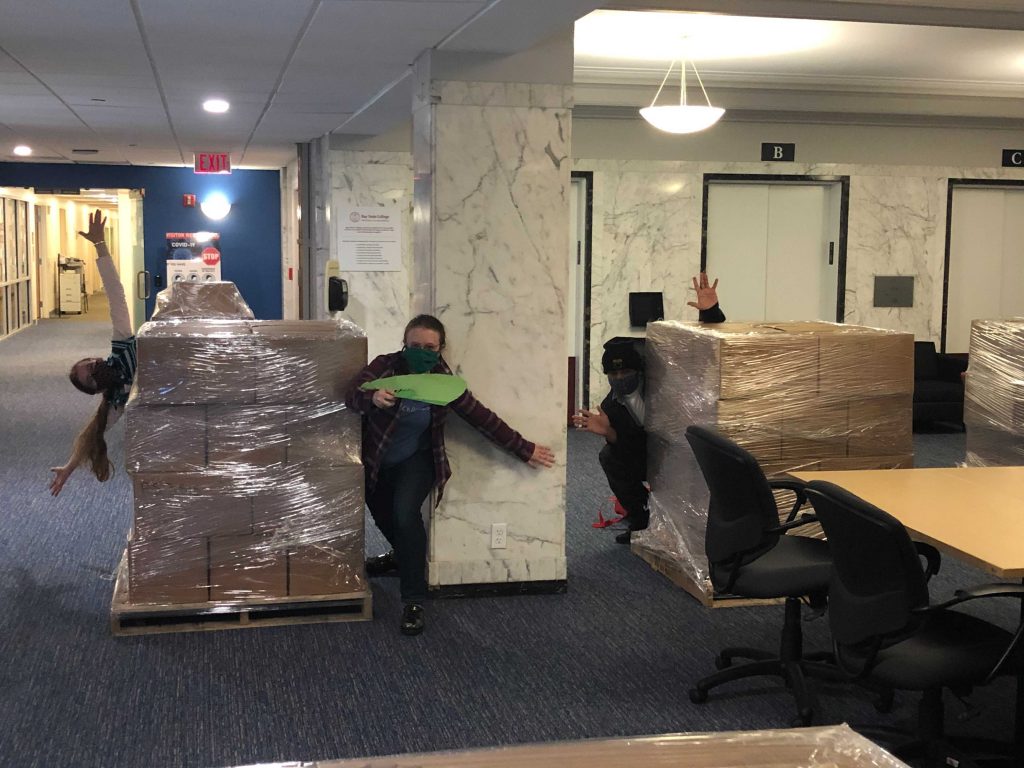 Internet Archive team members having fun with the task of packing and shipping an entire library collection.
Internet Archive team members having fun with the task of packing and shipping an entire library collection.
Under the direction of Neave, an Internet Archive team packed and shipped the 11,000 books in the first week of December.
Considering the future of Bay State’s books, its librarian is hopeful, noting, “Thanks to the Internet Archive, the books can live on as a cohesive collection.” Patrons can look forward to thumbing through historic fashion and textile books, texts on the history of the Civil Rights Movement, graphic novels, and even Bay State’s collection of historically banned young adult books.
The post Bay State College ‘Flips to Digital’ by Donating Entire College Library to the Internet Archive appeared first on Internet Archive Blogs.
Heartbeat of Marygrove College Continues with Online Library Collection
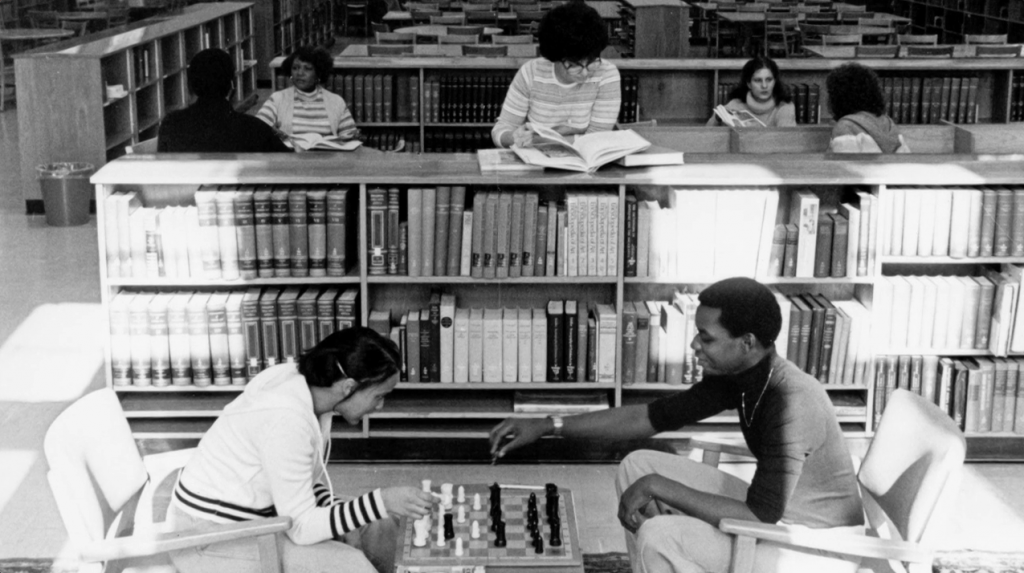 Students in the Reading Room at Marygrove College Library, c. 1982. IHM Archives, Monroe, MI.
Students in the Reading Room at Marygrove College Library, c. 1982. IHM Archives, Monroe, MI.
For nearly 100 years, the Marygrove College library was the hub of activity on campus. The small, liberal arts college in Detroit didn’t have a student union, so the library served as the heartbeat of campus, offering students a place to study, learn and socialize.
“The Marygrove library was very unique. It was a place where students came for help and to see their classmates,” says Laura Manley, a librarian from 2005-2015. “If they didn’t understand something about an assignment, they would find out from others and network in the library.”
As enrollment dropped and financial pressures mounted, the college closed in December 2019. The fate of the library collection was uncertain. Administrators explored avenues to sell or dispose of the books but decided instead to donate the entire collection to the Internet Archive. More than 70,000 volumes were boxed up and then scanned into a digital format. The physical copies were put into storage and the Archive makes one digital version of each item available for free check out through its Controlled Digital Lending (CDL) program.
Rather than shut its doors permanently, the library has a new home online. The Internet Archive celebrated the reopening of the Marygrove College Library last October, offering a way for the heart of the Marygrove campus to keep beating.
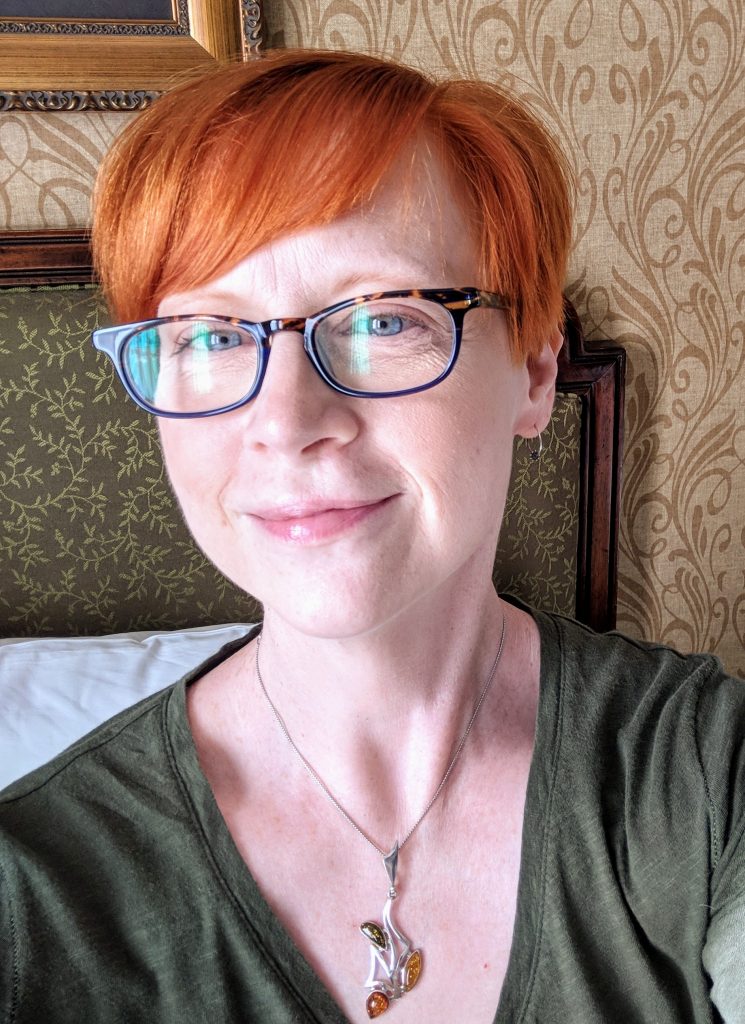 Jennifer Meacham, former Marygrove College librarian.
Jennifer Meacham, former Marygrove College librarian.
“I was thrilled with the idea that the collection went as a body and could live on,” says Jennifer Meacham, who worked at the library for 15 years. “The library had a long history of expanding to meet the growing needs of the student body as it changed.”
Marygrove began as a Catholic women’s college, eventually becoming co-ed and predominantly African American, reflecting the demographics of the surrounding community. Professors emphasized not just learning in the classroom, but the importance of making the world a better place, says Meacham. That translated into a need for materials on social justice issues. And because librarians worked closely with students, they were able to learn about their specific research projects and purchase materials tailored to their interests.
As Meacham curated the children’s book collection at Marygrove, she intentionally bought books with black and brown characters covering issues that were relatable to students who teachers graduating from the college would have in class. Once the collection was made available online, Meacham says she eagerly browsed through the diverse collection and was pleased to know it is now freely available to anyone.
 Jeffrey Zachwieja, former Marygrove College librarian.
Jeffrey Zachwieja, former Marygrove College librarian.
Jeffrey Zachwieja was hired in 1996 as a reference and instruction librarian as Marygrove was beginning to move from card catalogues to an automated system with electronic databases. “We wanted to preserve the past, but move to the future,” says Zachwieja, who built the library’s first website. Care was taken to keep the collection current while keeping books that reflected the deep history of various fields of study at the college, including education and religion.
The library became a go-to spot for technology, providing many students with their only access to the internet or a computer. Librarians provided individual support to students as they navigated new platforms and software programs.
Students needing help at the library reflected the span of the student body from undergraduates who had come through the Detroit Public Schools to graduate students in their 30s and 40s. Manley says it was fulfilling to work with the students one-on-one, especially those who had limited technology experience and relied heavily on the library.
Meacham says the library tried to provide a range of services in all things related to information. Librarians recommended materials for research papers, direction on bibliographies, feedback to make sure students weren’t plagiarizing, and an audience to practice a presentation. “The library was seen as a human resource,” she says. “We had a very good reputation and would bend over backwards for students and faculty,” she says.
Manley says the experience at Marygrove changed how she viewed access to education.
 Laura Manley, former Marygrove College librarian.
Laura Manley, former Marygrove College librarian.
“I went from thinking when I first started my career that people should succeed by merit. But what I witnessed is there were all kinds of bright students who should have knowledge readily available. But they had to struggle because of reasons that were no fault of their own,” says Manley. “Whether they didn’t have a solid enough K-12 or it was socioeconomics, not everyone starts at the same playing field. Sometimes you have to bring someone up to speed to be able to fly. They are just as worthy and have just as much potential.”
Librarians at Marygrove went beyond their traditional role to help support students. “Our goal was to help students succeed. Once they had a foundation, they could do anything,” Manley says.
If you’d like to learn more about the Marygrove College Library, you can watch a video about the collection and read more about the donation in our previous blog posts.
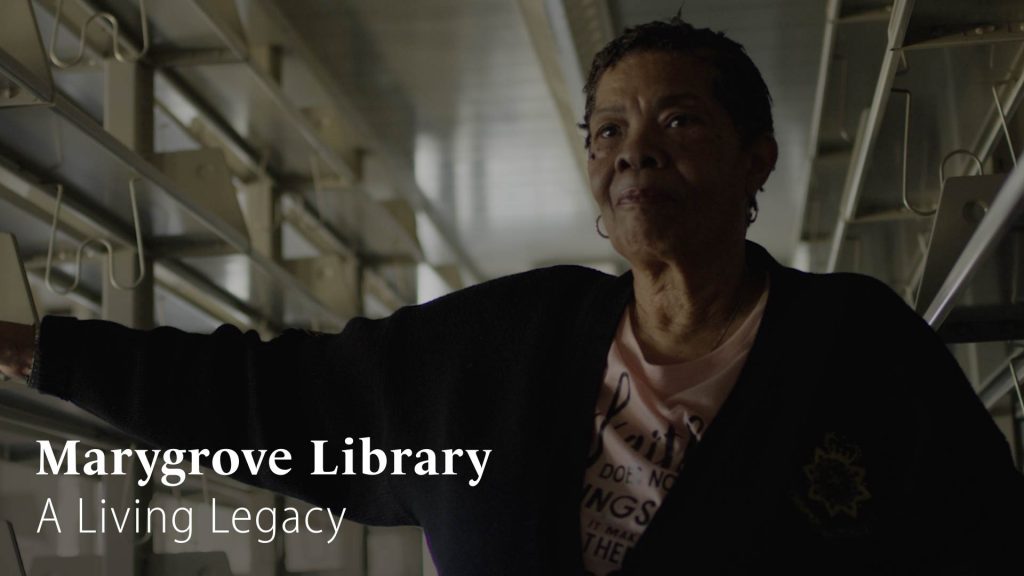
The post Heartbeat of Marygrove College Continues with Online Library Collection appeared first on Internet Archive Blogs.
Library Futures: New Nonprofit Launches to Support a Technology-Positive Future for Libraries
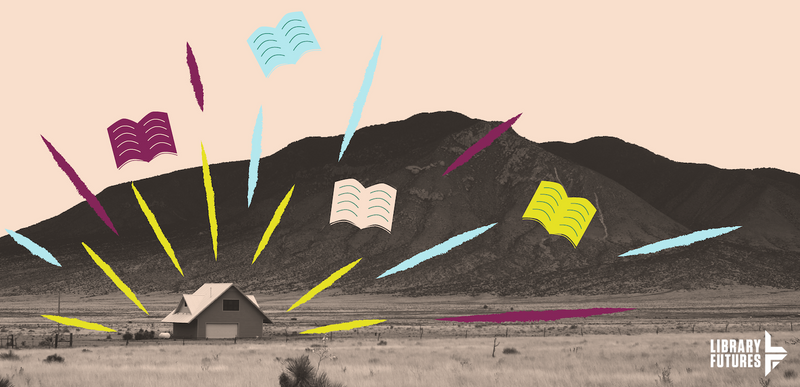 Learn more about Library Futures, a new nonprofit helping libraries meet the digital needs of their patrons, at libraryfutures.net.
Learn more about Library Futures, a new nonprofit helping libraries meet the digital needs of their patrons, at libraryfutures.net.
A coalition of advocacy and public interest groups has joined forces to launch the Library Futures Institute, a nonprofit 501(c)(3) committed to upholding the right of libraries to provide users with materials in the new digital environment.
The new organization launched its website on January 25 and will work to empower libraries to fulfill their mission of providing equal and equitable access to culture for the public good.
“We need to preserve the significant value of library collections that benefit learning, research, intellectual enrichment of the public — but in the digital space,” said Kyle K. Courtney, board chair of Library Futures, and a copyright advisor and program manager at the Harvard Library Office for Scholarly Communication. “Libraries have been a fundamental part of worldwide access to knowledge.”
The public is invited to sign up for the mailing list, follow the organization on Twitter and Instagram, and become a coalition partner.
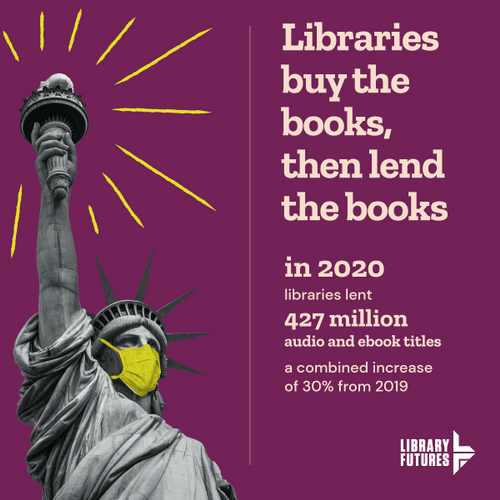 Share this message with your followers at https://www.libraryfutures.net/take-action
Share this message with your followers at https://www.libraryfutures.net/take-action
The pandemic has underscored the urgency for libraries to transform to the digital age, Courtney said. The need for libraries to be able to provide digital material is a consumer issue that Library Futures hopes will gain traction with the broader public. “We are hoping to win hearts and minds to effectuate change,” Courtney said.
Library Futures was triggered by the challenge that libraries face accessing digital materials from publishers. Libraries have long co-existed with publishers and are trustworthy partners, but there has been a shift in the relationship in the digital world, Courtney said. Libraries Futures will advocate for less-restrictive licensing agreements for e-content, content ownership and stewardship, broad digital access for the public, and implementing the practice of Controlled Digital Lending (CDL) where patrons can borrow one secure digital copy of a book for every print book that a library owns.
 Share this message with your followers at https://www.libraryfutures.net/take-action
Share this message with your followers at https://www.libraryfutures.net/take-action
Executive Director of Library Futures Jennie Rose Halperin says it’s critical for libraries to stand up from a position of strength to assert the role that libraries have in society.
“When you think about the power of the internet – to have any piece of information at your fingertips is amazing. And yet, the ways publishing captures knowledge globally means that dream cannot be realized,” said Halperin, who has worked as a librarian and digital strategist for Creative Commons and Harvard University Law School. “I believe libraries play a crucial and unique role in changing that paradigm.”
The agenda for Library Futures will include awareness building, education, outreach, and advocacy.
 Share this message with your followers at https://www.libraryfutures.net/take-action
Share this message with your followers at https://www.libraryfutures.net/take-action
The Internet Archive is among the initial coalition partners supporting Library Futures. Others include: Authors Alliance, Boston Public Library, Creative Commons, EveryLibrary, Public Knowledge, Readers First, SPARC, and Special Libraries Association.
“I care about libraries lending, purchasing and preserving materials,” said Halperin. “As a coalition and advocacy organization, Library Futures is positioned to bring together organizations into conversation with libraries, archives, museums and the entire cultural heritage community to effectuate change.”

As part of its initial public programming, on February 10 Library Futures will co-host a panel discussion with the Internet Archive focused on dispelling myths about Controlled Digital Lending. Registration for the webinar is free and open to the public.
The post Library Futures: New Nonprofit Launches to Support a Technology-Positive Future for Libraries appeared first on Internet Archive Blogs.
Free Limited Edition: Artist Whitney Humphreys creates a zine series, “Gendered Machines”
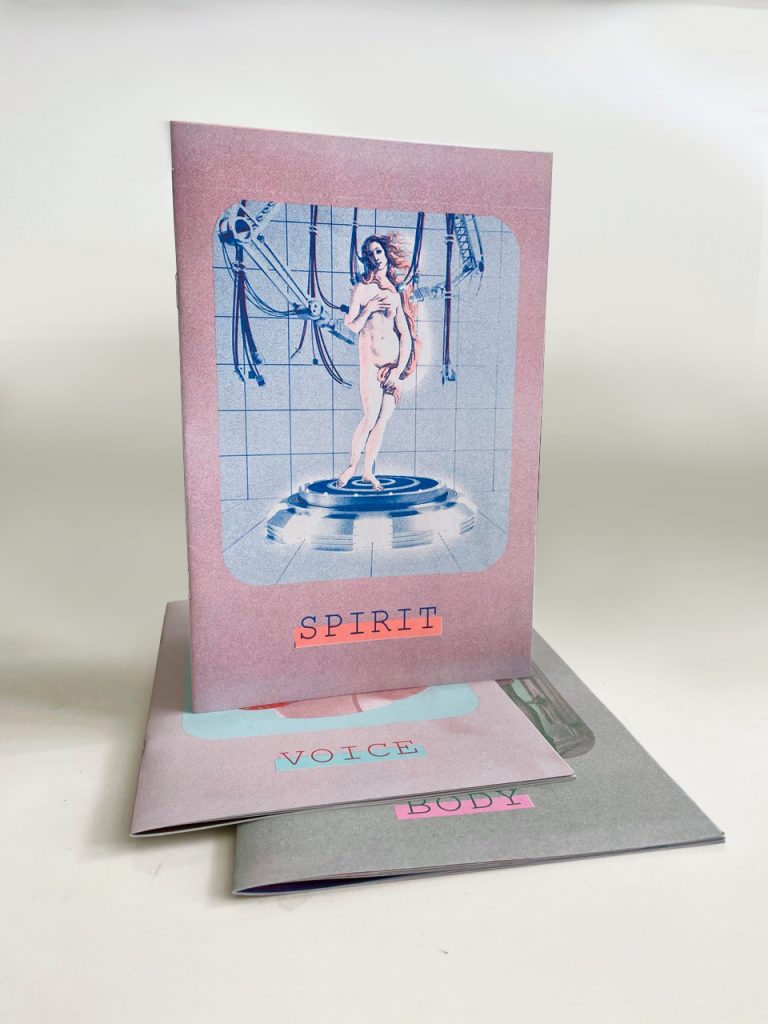
Artist Whitney Humphreys is collaborating with the Internet Archive and Tiny Splendor Press to produce 100 copies of a limited-edition zine. In the three-part zine titled Gendered Machines, Humpries uses digital artifacts discovered in the collections of the Internet Archive to explore physical objects that have been assigned a gender, exposing the assumptions and biases of these gender labels.
Printed at Tiny Splendor Press and designed using manipulated, found imagery sourced largely from media in the Internet Archive, the zines of Gendered Machines are both examinations and artifacts of knowledge production technologies. Possessing the capability to transfer between a digital and physical state, the zine format itself reflects the modes through which influential information is delivered and shared, as well as the liminal quality of the space between real and constructed existence.
In Humphreys’ project, Gendered Machines are defined as any non-human, mechanical objects that are associated with, signifiers of, or assigned a gender. Humphreys is intrigued by how this phenomenon manifests in both lived and fictional realities, revealing a typical polarization in these relationships. Society imposes on these objects labeling that reflects our limited understanding of gender. People create, use, and identify with these labels, designating things as either objects of service or of domination, worshiped or feared for the power they possess. This is a patriarchal oversimplification that her work seeks to complicate.
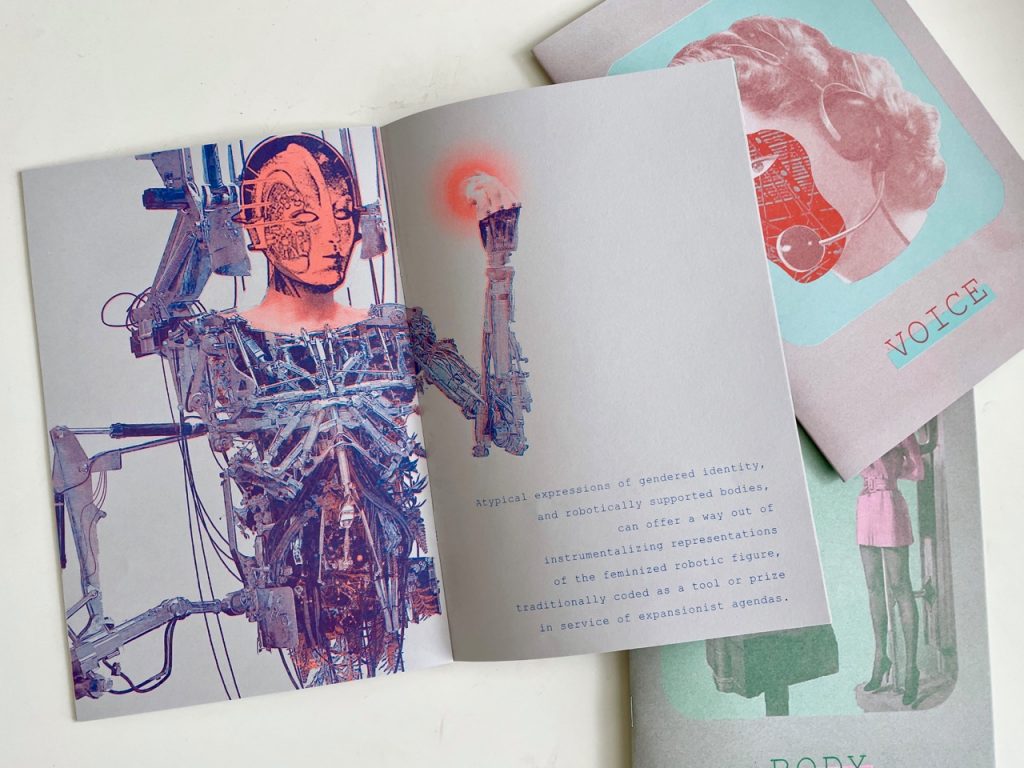
A web of representations produced through repeated narratives in fiction have linked how we understand both object-hood and person-hood. The project’s title likewise reflects the culturally constructed mechanisms through which we learn to identify. Just as an ideal femininity is socially invented to serve male desires, technological artifacts, tools and media have been built to fulfill the needs of the historically male-controlled landscape of invention. The interwoven histories of influence that are brought to light through this project are embedded in the computerized objects we use every day.
Gendered Machines is an extension of these findings, synthesized into the accessible framework of a set of zines. The volumes are focused within three scopes–Body, Voice, and Spirit—each acting as a nexus where patterns of signification are often located across time and media. Humphreys’ collection represents a variety of resources, influences, curiosities, and inspiration.
To receive a copy of the zines mailed to you (only 100 copies available) fill out the form below:
They are also available to view online or to download here on the Internet Archive:

ABOUT THE ARTIST
 Whitney Humphreys working at Tiny Splendor
Whitney Humphreys working at Tiny Splendor
Whitney Humphreys is a San Francisco Bay Area artist and teacher and a recent graduate of San Francisco Art Institute’s Dual Degree program, earning an MFA in Studio Practice, with a focus in printmaking and sculptural installation. She also earned an MA in the History and Theory of Contemporary Art with her thesis titled, Gendered Machines. Culminating in a practice rooted deeply in the processes of research, her work addresses modes of knowledge production and representation that impact constructions of identity, examined through an Intersectional Feminist lens. She has exhibited throughout the Bay Area during her career as an artist, muralist, designer, maker, event coordinator, and instructor.
Follow Whitney Humphreys at WhitneyHumphreys.com or on her Instagram @WitchneyJoanne
ABOUT OUR PARTNERS

Tiny Splendor started in 2012 as a tiny collective, traveling around sharing friends’ artwork out of a small wooden fold-up gallery. Now they operate two separate studios, one in Berkeley and one in Los Angeles, providing print and publishing services to artists locally and from around the world. They continue to pursue self-publishing and a love of ink on paper, producing print editions, zines, books, apparel and more.
Follow Tiny Splendor at tinysplendor.com or their instagram @tinysplendor
The post Free Limited Edition: Artist Whitney Humphreys creates a zine series, “Gendered Machines” appeared first on Internet Archive Blogs.
More than 100 years of Editor & Publisher Now Fully Accessible Online on the Internet Archive
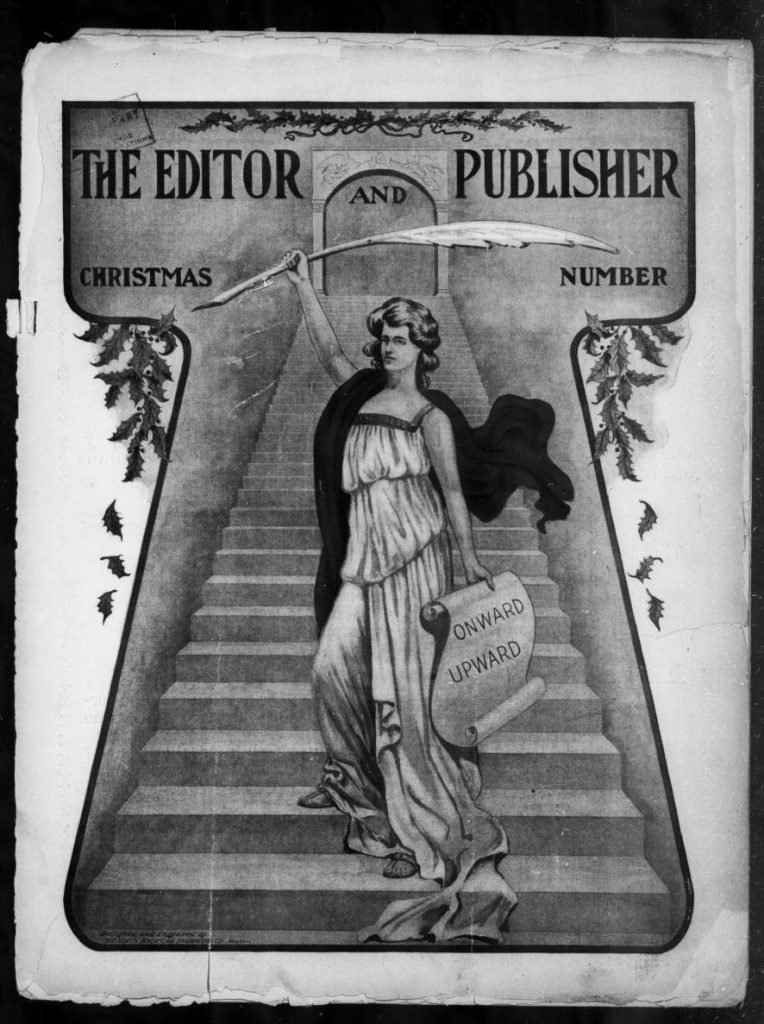 Editor & Publisher Magazine, 1901
Editor & Publisher Magazine, 1901
When Mike Blinder acquired Editor & Publisher magazine in October 2019, he inherited boxes of back issues that he put in a climate-controlled storage unit near his home in Tampa, Florida. Leafing through the old — and sometimes brittle — pages of the journalism trade publications, he noticed a reference to microfilm access to the content.
Blinder, a media consultant for more than 40 years, says he turned detective trying to track down the missing E&P on microfilm. The odyssey would take him to past owners and bankruptcy documents before discovering that the canisters of microfilm had been purchased and given to the Internet Archive to digitize and make available to the public for free.
When Blinder called Brewster Kahle of the Internet Archive and found out we had the microfilm for his back issues, he was very excited to find the microfilm was not only safe, but that the Internet Archive would digitize all of the issues at no cost to him. Blinder enthusiastically gave permission for the full 100-year history to be read and downloaded by anyone, anywhere – along with E&P’s International Yearbook and Market Guide. Going beyond the Internet Archive’s traditional lending system ensures it can be indexed by search engines and made maximally useful to readers and researchers.
“I just went nuts,” Blinder recalls of learning about the project earlier this year. “I read history all the time. The fact that content about this incredible industry was available to humanity was exceptionally exciting.”
The ability to research these archived issues has been truly exciting, especially for those looking up historical documents, many with a personal or family connection. Amy Levine is the daughter of the former publisher of sixteen small newspapers in Northern California. When Levine looked up the past issues featuring her father Mort and his legacy, she was all over it. “I loved it,” said Levine, “and I showed my father– he loved sharing his past accomplishments with me.”
Hiring a company to scan the stacks of print copies would have been a massive and expensive undertaking that Blinder says he didn’t have the funds to do. Turning microfilm into digital content is much easier and the process was underway at the Internet Archive at no cost to him.
“It was good news,” Blinder says. “[The press] is part of the constitution. Our founding fathers told us that we needed to exist.”
While Blinder says he thinks there is enough demand to charge for access to this collection of magazines, he’s glad the information is freely available for journalism students, scholars, and the general public. Blinder plans to tell his colleagues in the media business about the newly established digital collection and says he’s confident there will be an audience for the material.
“There are a lot of people who study our industry. We are in such a crisis now,” says Blinder of the competition from social media and struggles of daily newspapers. Over the years, E&P has chronicled changes in the business during times of recession, war, and cultural change. It includes awards for publishers of the year and young journalism professionals. Blinder anticipates the collection will appeal to people who want to look back at past trends.
“There are a lot of people who study our industry. We are in such a crisis now”
Mike Blinder, Editor & Publisher magazineSince purchasing E&P last year, Blinder and his wife, Robin, have been able to turn the operation around, doubling its revenues and tripling its audience.
“We love journalism. We want to talk about journalism as a business,” Blinder says. “We are an independent voice for the industry.”
Now you can read 100 years of history in the archive of Editor & Publisher magazine.
The post More than 100 years of Editor & Publisher Now Fully Accessible Online on the Internet Archive appeared first on Internet Archive Blogs.
Pastor: “Profound Gift” to Discover Books Through Internet Archive’s Program for Users with Print Disabilities
Authorized readers have special access to millions of digitized books through the Internet Archive’s program, connecting patrons with print disabilities to a vast digital library.
Doug Wilson says he’s a bit of a “bookaholic.” As senior pastor of a nondenominational church in West Covina, California, he surrounds himself with books at his office and study at home.
 Pastor Doug Wilson is an avid reader who benefits from Internet Archive’s program for people with print disabilities.
Pastor Doug Wilson is an avid reader who benefits from Internet Archive’s program for people with print disabilities.
“I’m a voracious reader and love learning,” said Wilson, who recalls taking a wagon to the library every week as a kid and bringing back a stack of books. “I find life intriguing.”
The 64-year-old said his vision has never been great, but within the last year noticed it was worsening. Wilson was struggling to read print with small font sizes or in low light. An avid user of the Internet Archive, he learned about the Archive’s program for users with print disabilities, which allows authorized users to skip waitlists for the ebook collection and download protected EPUBs and PDFs. Wilson applied for the program and was granted access, with great results.
“It’s so helpful to be able to have multiple resources open at once on my computer,” said Wilson, who looks up material online from ancient thought to contemporary theology for his sermons. “It’s been wonderful to find something on just about anything.”
Signing up for the program was easy and fast, said Wilson. Students and researchers associated with a university can obtain access through their university library or student success center. For those outside higher ed, the process is run by Jessamyn West at the Vermont Mutual Aid Society, who receives requests through an online form from patrons around the world. People who qualify for the program include those with blindness, low-vision, dyslexia, brain injuries and other cognition problems who need extra time to interact with materials. Since October 2018, West has welcomed more than 5,600 users into the program.
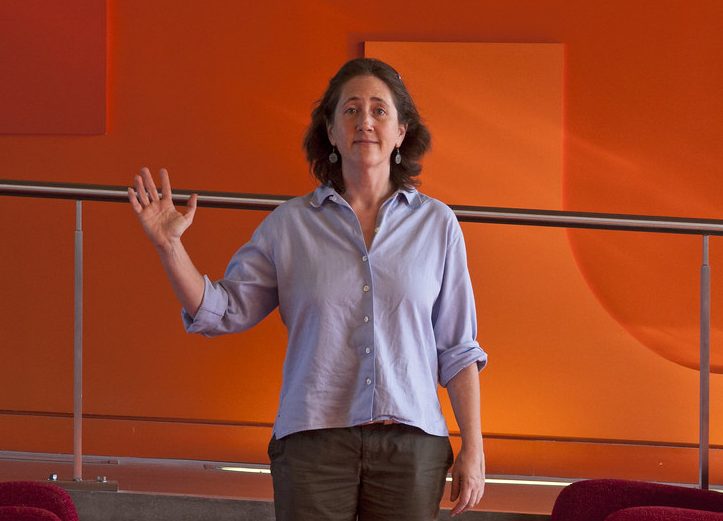 Jessamyn West of the Vermont Mutual Aid Society, who helps qualified users with print disabilities gain access to Internet Archive’s lending library.
Jessamyn West of the Vermont Mutual Aid Society, who helps qualified users with print disabilities gain access to Internet Archive’s lending library.
“It makes a real difference to people’s lives,” said West. “Especially nowadays when many people are stuck at home and working with limited resources, having a world of accessible books available to them opens doors and expands horizons. I’ve seen people checking out books on drawing and painting, books about art history and comparative religions, and just a lot of fiction. The collection is truly extensive.”
With expanded access to digitized books, Wilson said he has been reconnecting with works written by many of his mentors through the digital theological collections. “It’s been a profound gift to discover those books that have been influential in my life. Getting access has been another way to be encouraged and mentored even from a distance,” said Wilson, adding he is in a season of life when many of those people are passing away. “The service has been so generous and a supplement to my own library.”
Being able to find the exact resource he needs from home and late at night is a convenience that Wilson said he values. Wilson has enjoyed books from Marygrove Library, a collection full of religious and social justice materials that was recently donated and made available online.
In an era with competing forms of information and disinformation, Wilson said the Internet Archive is important. “Wisdom is hard to come by,” said Wilson. “We are barraged with data in our culture. It can be hard to ferret out what’s real. To have access to actual information and works that have stood the test of time is a godsend.”
To learn more about the Internet Archive’s program for users with print disabilities, and to verify eligibility, please visit the program web page.
The post Pastor: “Profound Gift” to Discover Books Through Internet Archive’s Program for Users with Print Disabilities appeared first on Internet Archive Blogs.
Happy Martin Luther King Jr. Day!
Today the United States commemorates the life of Dr. Martin Luther King, Jr—one of history’s most influential advocates for peace, equality, and civil rights. As a free digital library, the Internet Archive is home to thousands of books, texts, videos, images, and other materials on his work and impact. Here are a few ways you can use our materials to celebrate the life of Dr. King!
Watch
Dr. King was a major participant in the 1963 March on Washington for Jobs and Freedom, one of the largest rallies for human rights in American history—watch original newsreel footage of the March here! You can also listen to part of a commencement speech Dr. King gave at Hofstra University in 1965 and see contemporary reporting on his receipt of the 1964 Nobel Peace Prize.
Read
The Internet Archive’s collection of texts contains thousands of works both by and about Martin Luther King Jr., ranging from books for children to collections of his speeches. Our new Marygrove College Library collection includes several books on Dr. King, as well as the Civil Rights Movement and social justice.
If you’re interested in reading more on the African-American experience, you can also check out the #1000BlackGirlBooks collection and the Zora Canon. We’ve created some handy resource guides that include Antiracist & Racial Equality Reading Lists and Racial Equality Books for Kids. Finally, through the Community Webs program, our partners at the Schomburg Center for Research in Black Culture created the #HashtagSyllabusMovement web archive collection, which contains crowdsourced reading lists highlighting social justice issues within the Black community—a great place to start if you’re looking for antiracist reading material!
Contribute
The Internet Archive contains millions of items that have been uploaded, donated, or submitted by our users; your contributions make up a crucial part of our library. If you own any civil rights books, records, or physical media that you would like to see added to the archive, feel free to donate them! If you already have digital media—such as video, images, or audio of Martin Luther King Day celebrations or multimedia tributes—then feel free to upload it to the Internet Archive. And as always, if you see something online that you think should be added to our historical record, you can use the Wayback Machine’s Save Page Now feature to preserve it for posterity.
We hope you have a safe and happy Martin Luther King Jr. Day. Enjoy the archive!
-The Internet Archive Team
If you enjoyed this blog post and want to help support the Internet Archive, you can make a tax-deductible donation here. Thank you for helping us provide Universal Access To All Knowledge.
The post Happy Martin Luther King Jr. Day! appeared first on Internet Archive Blogs.
Public Domain Day Short Film Contest Highlights Works of 1925
 A still from the winning submission Danse des Aliénés (Dance of the Insane), featuring actress Greta Garbo.
A still from the winning submission Danse des Aliénés (Dance of the Insane), featuring actress Greta Garbo.
Filmmakers responded with enthusiasm and creativity to a call from the Internet Archive to make short films using newly available content from 1925 in celebration of Public Domain Day. They discovered a new freedom in being able to remix film clips with Greta Garbo, magazine covers with flappers, and sheet music from standards like “Sweet Georgia Brown” – all downloadable for free and reusable without restriction.
For the contest, vintage images and sounds were woven into films of 2-3 minutes that conveyed a sense of whimsy, nostalgia, and humor. While some were abstract and others educational, they all showcased ingenuity and possibility when materials are openly available to the public.
“The Internet Archive has spent 24 years collecting and archiving content from around the world…now is the time to see what people can do with it,” said Amir Saber Esfahani, director of special arts projects at the Internet Archive. He was a judge in the December short-film contest along with Carey Hott, professor of art and design at the University of San Francisco, and Brewster Kahle, digital librarian and founder of the Internet Archive.
The judges reviewed 23 entries and chose a winner based on creativity, variety of 1925 content (including lists of all sources), and fit for the event (fun, interesting and captivating). These new creative works may also be available for reuse, as indicated by the license term selected by the creator.
First place: Danse des AliénésJoshua Curry, a digital artist from San Jose, won first place for his submission, Danse des Aliénés (Dance of the Insane), in which he layers pieces of film on three panes with images rising and falling music to “Dance Macabre” (Dance of Death) performed by the Philadelphia Symphony Orchestra. The format was inspired by the poem dramatized in triptych in the short film In Youth, Beside the Lonely Sea. His creation included flashes of Greta Garbo, ghosts from Koko Sees Spooks and colorful designs flowing in and out of the frames.
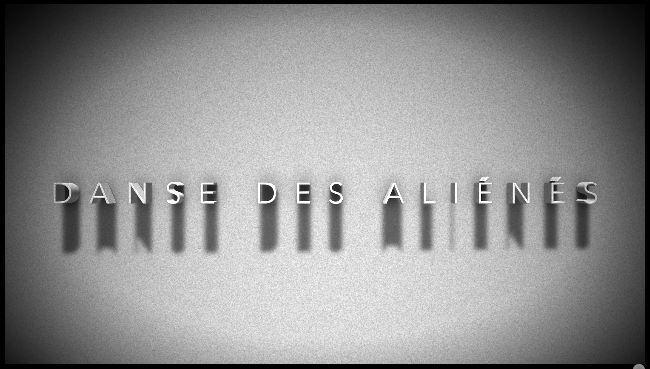 Watch Danse des Aliénés.
Watch Danse des Aliénés.
Curry, who has been making experimental videos since the 1980s, says the project was a perfect fit for his artist techniques, where he likes to stress and transform film in new ways. His film had a glitchy, broken feel that is in line with the aesthetic he often uses (See his other work at lucidbeaming.com.)
“I wanted it to be evocative and for people to appreciate it as a stand-alone piece of art,” says Curry, 49. “My visual goal was to produce something challenging that a wide variety of people could connect to – despite being mostly abstract and sourced from 95-year-old content.”
 Filmmaker Joshua Curry.
Filmmaker Joshua Curry.
While Curry’s studio is modern and full of electronic equipment, working with the 1925 content and hearing music with cartoonish voices making novelty, popping sounds their cheeks was a welcome break. “One day when I was choosing the music, I was driving around the city listening to songs and felt like I was transported back in time,” Curry says.
He says it was also a pleasure to have easy access to the public domain content without commercial gatekeeping or legal obstacles, which he often encounters with digital material he wants to remix. As it happens, Curry just completed a class in multimedia copyright. He says he works hard to operate within the rules because he wants his video creations to survive online and not be taken down because of copyright infringement allegations.
Having the works for this project in the public domain meant less time trying to get the content and more time to focus on the creative process. “It was like being a little kid who was told he couldn’t have cake and then one day saying: ‘Dive in!’,” Curry said of the access to the 1925 material in the Internet Archive.
Receiving the contest’s top honors was particularly meaningful, says Curry, because he works in Silicon Valley where the Internet Archive has “great nerd cred” and is a library that people revere.
“I was proud to win with weirdness,” Curry says. “My piece was abstract, without narration or titles, and an authentic tribute to the pioneering work of the experimental films I made use of.”
To learn more about Curry’s inspirations and to hear from him directly, watch the director’s commentary that was captured during the Public Domain Day event.
Second place: Vanishing InkSecond place went to Alaro Brandon for Vanishing Ink, a film with a montage of clips from 16 movies including The Last Laugh and Hold My Baby and four songs: “Norwegian Dances,” “Song of the Vagabonds,” “I Want to be Happy” and “Hawaiian Ripples.”
 Watch Vanishing Ink.
Third place: Fashion of the 1920s
Watch Vanishing Ink.
Third place: Fashion of the 1920s
Arden Spivack-Teather, 12, and Sissel Ramierz, 13, both of San Francisco, won third place for their short film, Fashion of the 1920s. It traces the evolution of women’s clothing from tight-fitting styles that required corsets to drop-waisted, loose dresses popularized by flappers. “Women could finally be chic and comfortable at the same time,” the film notes. “Every time you notice a fabulous flowing frock, thank the 20s.”
 Watch Fashion of the 1920s.
Watch Fashion of the 1920s.
Arden found out about the contest through her mom, Cari Spivack, a staff member at the Internet Archive, and decided to partner with her friend, Sissel, a classmate since kindergarten who she had collaborated with for a winning science fair project in fifth grade. On Zoom and FaceTime, the girls looked through old McCalls magazines and decided to focus on the changing style of women’s clothing.
 From left, filmmakers Arden Spivack-Teather and Sissel Ramirez.
From left, filmmakers Arden Spivack-Teather and Sissel Ramirez.
“It was really fun to use our creativity and find things that would look good together,” said Arden, who had never before made a film. Although the research, script and editing were a challenge, she says she hopes to do it again.
Spivack said she enjoyed seeing her daughter explore the material in the Archive, giggling and musing at the kitchen table about the tonics and ads she discovered. “It was exactly what I was hoping would happen — that they would be gripped by fascination of a time period that was long gone. They could travel back and learn on their own, paging through a magazine just like someone their age would have in 1925.”
The diversity of approaches people had with the films was impressive, added Spivack.
“It’s a good introduction to what can be done with old materials. You can use them to learn and to educate others. Or you can reuse them to make something that’s completely unexpected or never seen before,” Spivack said. “As archivists everything is important. But you don’t know why until you see what it can turn into or what it informs in the future.”
Honorable mentions- Yo Hey Look! by Adam Dziesinski, which pieced together film clips where something caught an actor’s eye, from a baby in a wicker stroller to a woman with a bob haircut dancing to a man in a Bowler hat laughing.
- Michaela Giles made a time-lapse film of her using oil pastels, pencils, paints, and pens to draw a profile of a woman gracing the front of a vintage publication in 1925 Magazine Cover Recreation.
- Public Domain Day by Subhashish Panigrahi explained the basics of how copyright works with text interspersed with cartoon clips, colorful paintings, and magazine covers.
- Skevos Mavros played “Yes, Sir! That’s my Baby” and “Dreams” while showing comical, slapstick film clips, and dance scenes in his tribute to Public Domain Day 2020.
- 25 Dad Jokes from 1925 by Anirvan Chatterjee was a compilation of jokes gathered from vintage middle school and high school yearbooks from Iowa, Pennsylvania, Massachusetts, Oregon, California. Among the corny humor: “Why is the ocean so angry? It’s been crossed too many times,” and “What are the three most often words used in school? I don’t know.”
The films were shown at the December 17 Public Domain Day virtual party, where the creators were asked to discuss their projects in breakout room discussions. You can view a livestream of the event here.
The post Public Domain Day Short Film Contest Highlights Works of 1925 appeared first on Internet Archive Blogs.
Radio Ngrams Dataset Allows New Research into Public Health Messaging
Radio remains one of the most-consumed forms of traditional media today, with 89% of Americans listening to radio at least once a week as of 2018, a number that is actually increasing during the pandemic. News is the most popular radio format and 60% of Americans trust radio news to “deliver timely information about the current COVID-19 outbreak.”
Local talk radio is home to a diverse assortment of personality-driven programming that offers unique insights into the concerns and interests of citizens across the nation. Yet radio has remained stubbornly inaccessible to scholars due to the technical challenges of monitoring and transcribing broadcast speech at scale.
Debuting this past July, the Internet Archive’s Radio Archive uses automatic speech recognition technology to transcribe this vast collection of daily news and talk radio programming into searchable text dating back to 2016, and continues to archive and transcribe a selection of stations through present, making them browsable and keyword searchable.
Ngrams data setBuilding on this incredible archive, the GDELT Project and I have transformed this massive archive into a research dataset of radio news ngrams spanning 26 billion English language words across portions of 550 stations, from 2016 to the present.
You can keyword search all 3 million shows, but for researchers interested in diving into the deeper linguistic patterns of radio news, the new ngrams dataset includes 1-5grams at 10 minute resolution covering all four years and updated every 30 minutes. For those less familiar with the concept of “ngrams,” they are word frequency tables in which the transcript of each broadcast is broken into words and for each 10 minute block of airtime a list is compiled of all of the words spoken in those 10 minutes for each station and how many times each word was mentioned.
Some initial research using these ngramsHow can researchers use this kind of data to understand new insights into radio news?
The graph below looks at pronoun usage on BBC Radio 4 FM, comparing the percentage of words spoken each day that were either (“we”, “us”, “our”, “ours”, “ourselves”) or (“i”, “me”, “i’m”). “Me” words are used more than twice as often as “we” words but look closely at February of 2020 as the pandemic began sweeping the world and “we” words start increasing as governments began adopting language to emphasize togetherness.
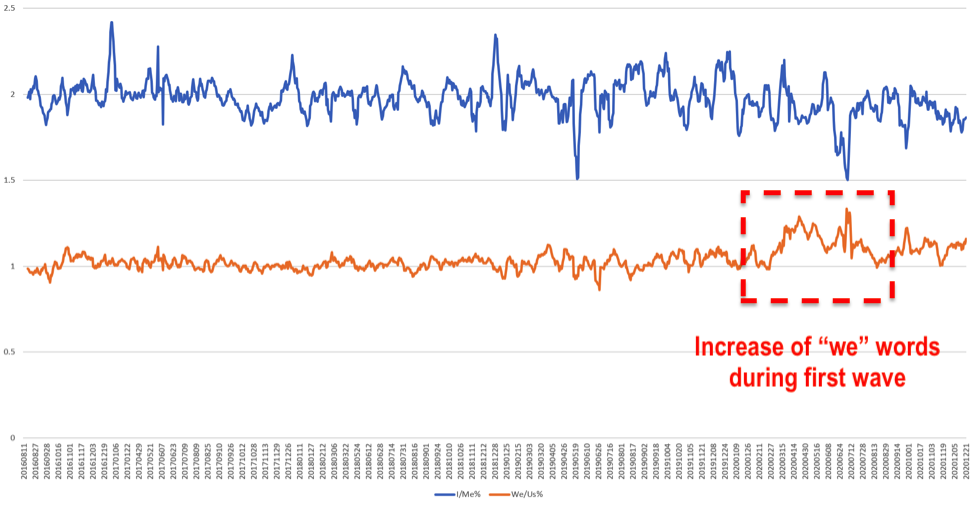 “We” (orange) vs. “Me” (blue) words on BBC Radio 4 FM, showing increase of “we” words beginning in February 2020 as Covid-19 progresses
TV vs. Radio
“We” (orange) vs. “Me” (blue) words on BBC Radio 4 FM, showing increase of “we” words beginning in February 2020 as Covid-19 progresses
TV vs. Radio
Combined with the television news ngrams that I previously created, it is possible to compare how topics are being covered across television and radio.
The graph below compares the percentage of spoken words that mentioned Covid-19 since the start of this year across BBC News London (television) versus radio programming on BBC World Service (international focus) and BBC Radio 4 FM (domestic focus).
All three show double surges at the start of the year as the pandemic swept across the world, a peak in early April and then a decrease since. Yet BBC Radio 4 appears to have mentioned the pandemic far less than the internationally-focused BBC World Service, though the two are now roughly equal even as the pandemic has continued to spread. Over all, television news has emphasized Covid-19 more than radio.
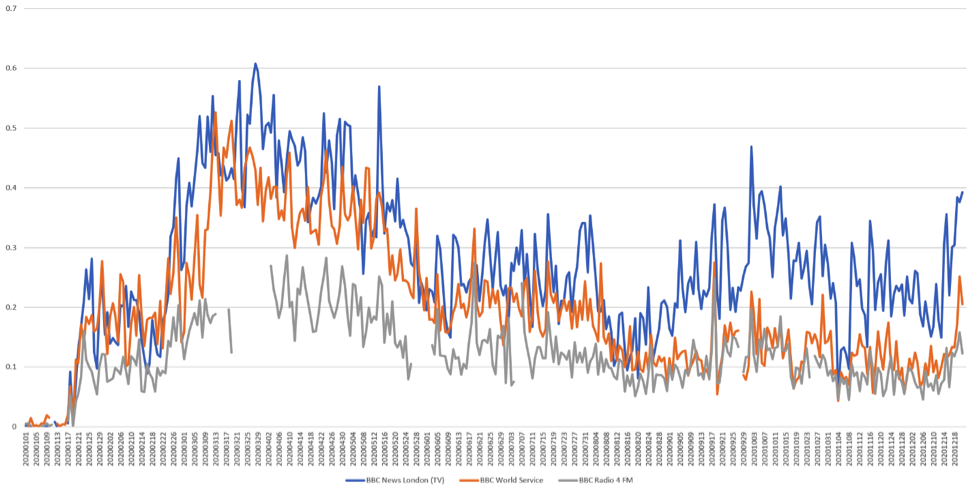 Covid-19 mentions on Television vs. Radio. The chart compares BBC News London (TV) in blue, versus BBC World Service (Radio) in orange and BBC Radio 4 FM (Radio) in grey.
Covid-19 mentions on Television vs. Radio. The chart compares BBC News London (TV) in blue, versus BBC World Service (Radio) in orange and BBC Radio 4 FM (Radio) in grey.
For now, you can download the entire dataset to explore on your own computer but there will also be an interactive visualization and analysis interface available sometime in mid-Spring.
It is important to remember that these transcripts are generated through computer speech recognition, so are imperfect transcriptions that do not properly recognize all words or names, especially rare or novel terms like “Covid-19,” so experimentation may be required to yield the best results.
The graphs above just barely scratch the surface of the kinds of questions that can now be explored through the new radio news ngrams, especially when coupled with television news and 152-language online news ngrams.
From transcribing 3 million radio broadcasts into ngrams to describing a decade of television news frame by frame, cataloging the objects and activities of half a billion online news images, to inventorying the tens of billions of entities and relationships in half a decade of online journalism, it is becoming increasingly possible to perform multimodal analysis at the scale of entire archives.
Researchers can ask questions that for the first time simultaneously look across audio, video, imagery and text to understand how ideas, narratives, beliefs and emotions diffuse across mediums and through the global news ecosystem. Helping to seed the future of such at-scale research, the Internet Archive and GDELT are collaborating with a growing number of media archives and researchers through the newly formed Media Data Research Consortium to better understand how critical public health messaging is meeting the challenges of our current global pandemic.
About Kalev LeetaruFor more than 25 years, GDELT’s creator, Dr. Kalev H. Leetaru, has been studying the web and building systems to interact with and understand the way it is reshaping our global society. One of Foreign Policy Magazine’s Top 100 Global Thinkers of 2013, his work has been featured in the presses of over 100 nations and fundamentally changed how we think about information at scale and how the “big data” revolution is changing our ability to understand our global collective consciousness.
The post Radio Ngrams Dataset Allows New Research into Public Health Messaging appeared first on Internet Archive Blogs.
Downsizing in 2021? Donate Your Discarded Books and Media to the Internet Archive
Looking around your home in the new year and wondering what to do with all the stuff you’ve accumulated? You’re not alone — turns out 54% of Americans are overwhelmed by the amount of clutter around them. As people move or downsize, they are often in a dilemma about what to do with their beloved books and records. The same goes for colleges and libraries when they close or relocate. So what’s a preservation-minded person or organization supposed to do with their extra books, records, or other media?
The Internet Archive is here to help! We welcome donations with open arms — from single books to entire libraries. The Internet Archive seeks to preserve and digitize one copy of every book, record, CD, film, and microfilm in support of our mission to provide “Universal Access to All Knowledge.”
 Liz Rosenberg, donation manager at Internet Archive, helping digitize a donation of 78 rpm records.
Liz Rosenberg, donation manager at Internet Archive, helping digitize a donation of 78 rpm records.
“Increasingly, people are turning to the Internet Archive to preserve materials and give them new life online,” said Liz Rosenberg, donation manager. “Staff members can even help to arrange for a convenient pick up of larger donations.”
“We are always looking for items that we don’t have already or ones that are in better shape,” said Rosenberg, who encourages people to check online, if convenient, if a copy is needed. For large collections or donations with special circumstances, Internet Archive will go onsite to pack and ship items at no expense to the donor. “Our goal is to make this process easy for donors.”
Internet Archive receives a variety of materials from individuals and organizations. Boxes can be mailed to facilities in Richmond, California, or brought to drop off locations in the U.S. and England. The Archive tries to digitize materials and make them available publicly, as funding allows.
Recent personal donations have included a collection of railroad maps and atlases from the 1800s. Also, a large collection of fragile 78rpm records was donated by a person in Washington, D.C., and 18,000 LP, 45, and 78 records were donated from a home in Arkansas.
Some recent institutional donations include 80,000 books from the Evangelical Seminary, 191 boxes of journals and periodicals from Hope International University, and 70,000 books, journals and microfilm from Marygrove College. These larger gifts are made into special collections to help Internet Archive users find the materials and celebrate the donor.
We are happy to give donors a receipt for tax purposes and celebrate the donation on the archive.org site if appropriate.
“We would love to provide a forever home for your media wherever you are located, however much you have,” said Rosenberg. “I love doing this role. It restores my faith in the goodness of the world every day.”
For more information about contributing, please visit the Internet Archive help center.
The post Downsizing in 2021? Donate Your Discarded Books and Media to the Internet Archive appeared first on Internet Archive Blogs.
Microfilm to the Rescue: Over a Century of Guernsey Breeders’ Journal Now on the Internet Archive
Since 1970, America has lost over 90% of its dairy farms. Preserving the rich cultural history of our nation’s dairy farmers has gone from important to mission critical. As one small step on a challenging path, the Internet Archive is honored to partner with the American Guernsey Association, the official breed registry organization for Guernsey dairy cattle in the United States. For over a century, AGA has published the Guernsey Breeders’ Journal, the official publication of the AGA and the longest-running publication of any American dairy breed organization. Working with staff on two continents, the Archive has been able to digitize and make available to the public AGA’s entire collection of Journal issues, dating back to 1910.
 Guernsey Breeders’ Journal, 1920
Guernsey Breeders’ Journal, 1920
The Internet Archive is thrilled to partner with the AGA by making back issues of American Guernsey Journal available for public access. The partnership offers something for everyone – farmers, industry, historians, and Guernsey-lovers alike. By digitizing the issues at no cost to AGA, and hosting them on the Archive’s own servers, AGA is free to distribute the entirety of its magazine collection by pointing its website users to the collection on the Internet Archive, or even embedding links to the issues on its own website.
According to Robin Alden, Executive Director for American Guernsey, the partnership has been a long time coming. “This is something we have wanted to do for a long time, and I think it will be a huge benefit to our readers and to Guernsey fans.”
“By working together, the Internet Archive has made all of the digitized issues available to the public, to search engines, and back to American Guernsey for their use and preservation,” said Marina Lewis, the Collections Manager of the Internet Archive. “We hope all publishers will work with us to make back issues publicly available.”
According to Alden, the Journal is a critically important tool to reach out to AGA’s members and constituents. With almost 2,000 issues dating back to 1910, the Journal is an opportunity to provide plenty of great content to readers. In fact, a recent survey by AGA indicates that its members and constituents received critical industry information from the Journal, beyond just membership in the AGA. The survey results showed that over 90% of Guernsey enthusiasts surveyed rely on the Journal for their primary source of news on the breed and the industry.

This is something we have wanted to do for a long time, and I think it will be a huge benefit to our readers and to Guernsey fans.
Robin Alden, AGA Executive DirectorIn addition to industry news, the Journal is also an invaluable research tool. Alden says she receives phone calls every year from students and members of animal husbandry organizations such as 4H with requests for research materials and data. Alden is able to direct students to the online collection at the Internet Archive (and soon the AGA website) so students can have free access to historical data and images for their projects.
Most importantly, the Journal supports AGA’s mission to expand the demand for Guernsey differentiated consumer products and deliver premium returns for producers and breeder members, with the goal of providing leadership, promoting programs, services, and technologies to ensure the integrity of the breed – while enhancing the value for its members, owners, and the industry. AGA also offers a variety of products and services, in addition to its breed registry. Among these are Golden Guernsey, a consumer-facing site that offers premium dairy goods from AGA’s network of Guernsey farmers throughout the United States and Canada.

For many readers, though, having such access to the Journal provides more than just facts and data; for many, having online access to the Journal offers a window to their past. According to Alden, many readers may have grown up on a farm or may now live internationally, and having this resource and being able to provide online access is huge. “We have a lot of members who want to be able to take a walk down memory lane, and they otherwise wouldn’t be able to do so.”
The post Microfilm to the Rescue: Over a Century of Guernsey Breeders’ Journal Now on the Internet Archive appeared first on Internet Archive Blogs.


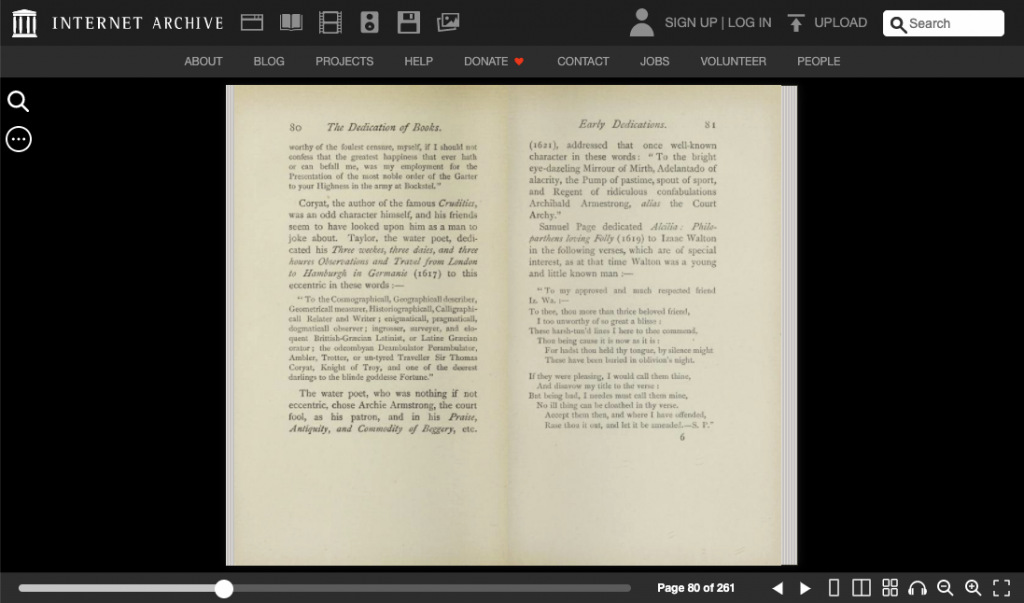






































































































![Reference manager - [Onderhoud aantekeningen]](http://labyrinth.rienkjonker.nl/sites/default/files/styles/medium/public/Reference%20manager%20v3%20-%20%5BOnderhoud%20aantekeningen%5D%2014-2-2010%20102617_0.jpg?itok=OJkkWhxY)
![Reference manager - [Onderhoud aantekeningen]](http://labyrinth.rienkjonker.nl/sites/default/files/styles/medium/public/Reference%20manager%20v3%20-%20%5BOnderhoud%20aantekeningen%5D%2014-2-2010%20102628.jpg?itok=CUvhRRr7)
![Reference manager - [Onderhoud bronnen] - Opnemen en onderhouden](http://labyrinth.rienkjonker.nl/sites/default/files/styles/medium/public/Reference%20manager%20v3%20-%20%5BOnderhoud%20bronnen%5D%2014-2-2010%20102418.jpg?itok=d7rnOhhK)
![Reference manager - [Onderhoud bronnen]](http://labyrinth.rienkjonker.nl/sites/default/files/styles/medium/public/Reference%20manager%20v3%20-%20%5BOnderhoud%20bronnen%5D%2014-2-2010%20102433.jpg?itok=CgS8R6cS)
![Reference manager - [Onderhoud bronnen]](http://labyrinth.rienkjonker.nl/sites/default/files/styles/medium/public/Reference%20manager%20v3%20-%20%5BOnderhoud%20bronnen%5D%2014-2-2010%20102445_0.jpg?itok=4oJ07yFZ)
![Reference manager - [Onderhoud bronnen]](http://labyrinth.rienkjonker.nl/sites/default/files/styles/medium/public/Reference%20manager%20v3%20-%20%5BOnderhoud%20bronnen%5D%2014-2-2010%20102500.jpg?itok=ExHJRjAO)
![Reference manager - [Onderhoud bronnen]](http://labyrinth.rienkjonker.nl/sites/default/files/styles/medium/public/Reference%20manager%20v3%20-%20%5BOnderhoud%20bronnen%5D%2014-2-2010%20102524.jpg?itok=IeHaYl_M)
![Reference manager - [Onderhoud bronnen]](http://labyrinth.rienkjonker.nl/sites/default/files/styles/medium/public/Reference%20manager%20v3%20-%20%5BOnderhoud%20bronnen%5D%2014-2-2010%20102534.jpg?itok=cdKP4u3I)
![Reference manager - [Onderhoud thema's en rubrieken]](http://labyrinth.rienkjonker.nl/sites/default/files/styles/medium/public/Reference%20manager%20v3%20-%20%5BOnderhoud%20themas%20en%20rubrieken%5D%2020-9-2009%20185626.jpg?itok=zM5uJ2Sf)













![Reference manager - [Raadplegen aantekeningen]](http://labyrinth.rienkjonker.nl/sites/default/files/styles/medium/public/Reference%20manager%20v3%20-%20%5BRaadplegen%20aantekeningen%5D%2020-9-2009%20185612.jpg?itok=RnX2qguF)
![Reference manager - [Relatie termen (thesaurus)]](http://labyrinth.rienkjonker.nl/sites/default/files/styles/medium/public/Reference%20manager%20v3%20-%20%5BRelatie%20termen%20%28thesaurus%29%5D%2014-2-2010%20102751.jpg?itok=SmxubGMD)
![Reference manager - [Thesaurus raadplegen]](http://labyrinth.rienkjonker.nl/sites/default/files/styles/medium/public/Reference%20manager%20v3%20-%20%5BThesaurus%20raadplegen%5D%2014-2-2010%20102732.jpg?itok=FWvNcckL)
![Reference manager - [Zoek thema en rubrieken]](http://labyrinth.rienkjonker.nl/sites/default/files/styles/medium/public/Reference%20manager%20v3%20-%20%5BZoek%20thema%20en%20rubrieken%5D%2020-9-2009%20185546.jpg?itok=6sUOZbvL)
![Reference manager - [Onderhoud rubrieken]](http://labyrinth.rienkjonker.nl/sites/default/files/styles/medium/public/Reference%20manager%20v3%2020-9-2009%20185634.jpg?itok=oZ8RFfVI)

![Reference manager - [Onderhoud aantekeningen]](http://labyrinth.rienkjonker.nl/sites/default/files/styles/medium/public/Reference%20manager%20v3%20-%20%5BOnderhoud%20aantekeningen%5D%2014-2-2010%20102603.jpg?itok=XMMJmuWz)


































































